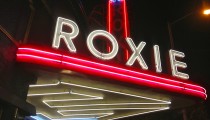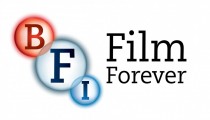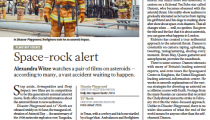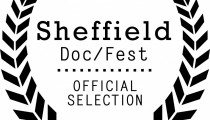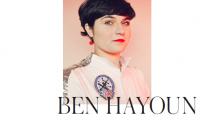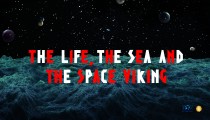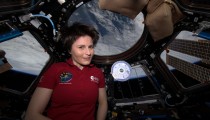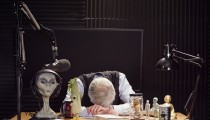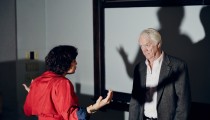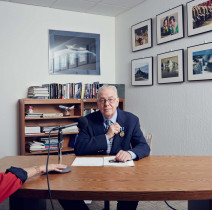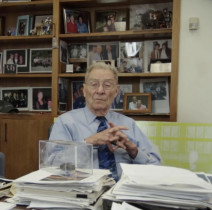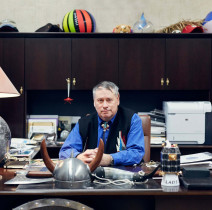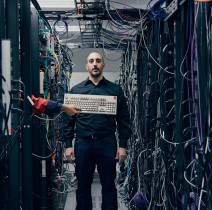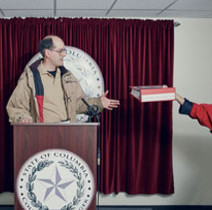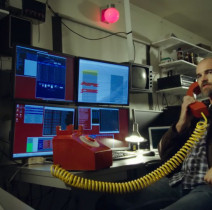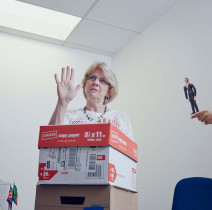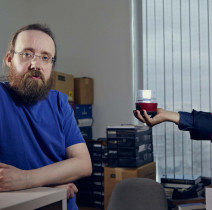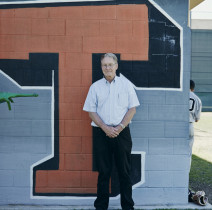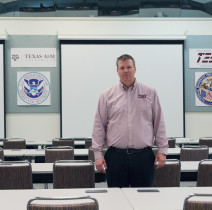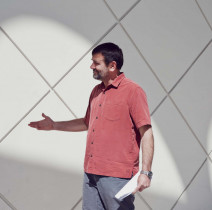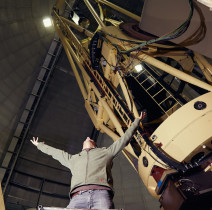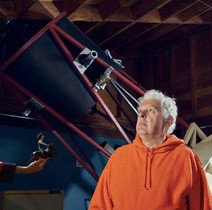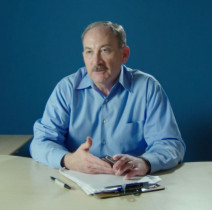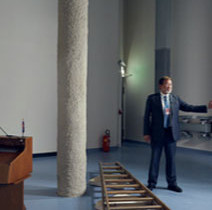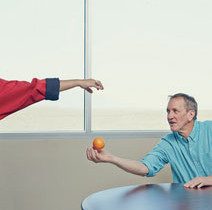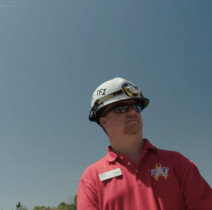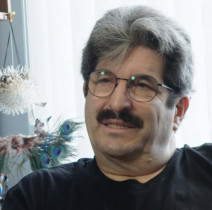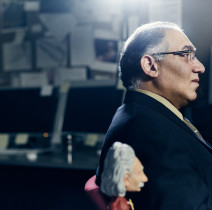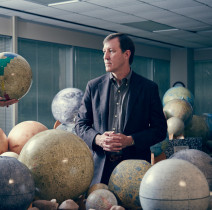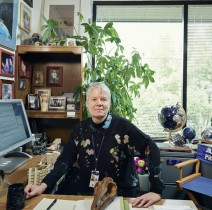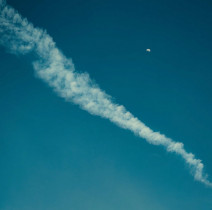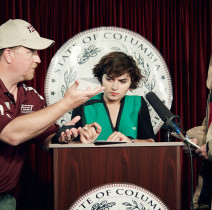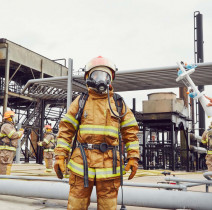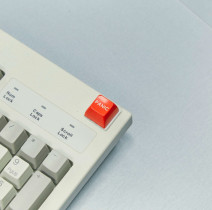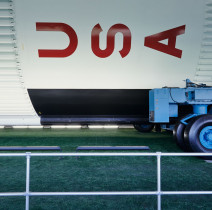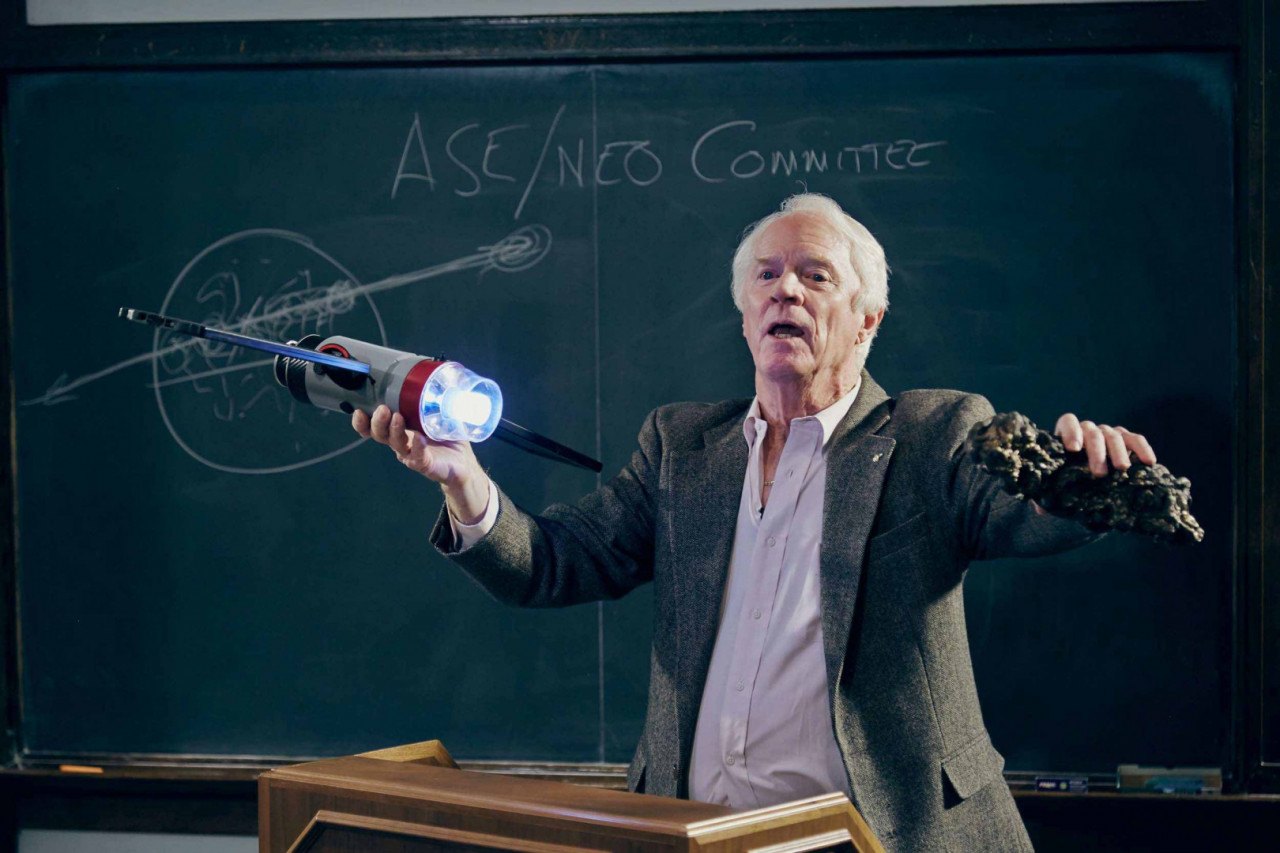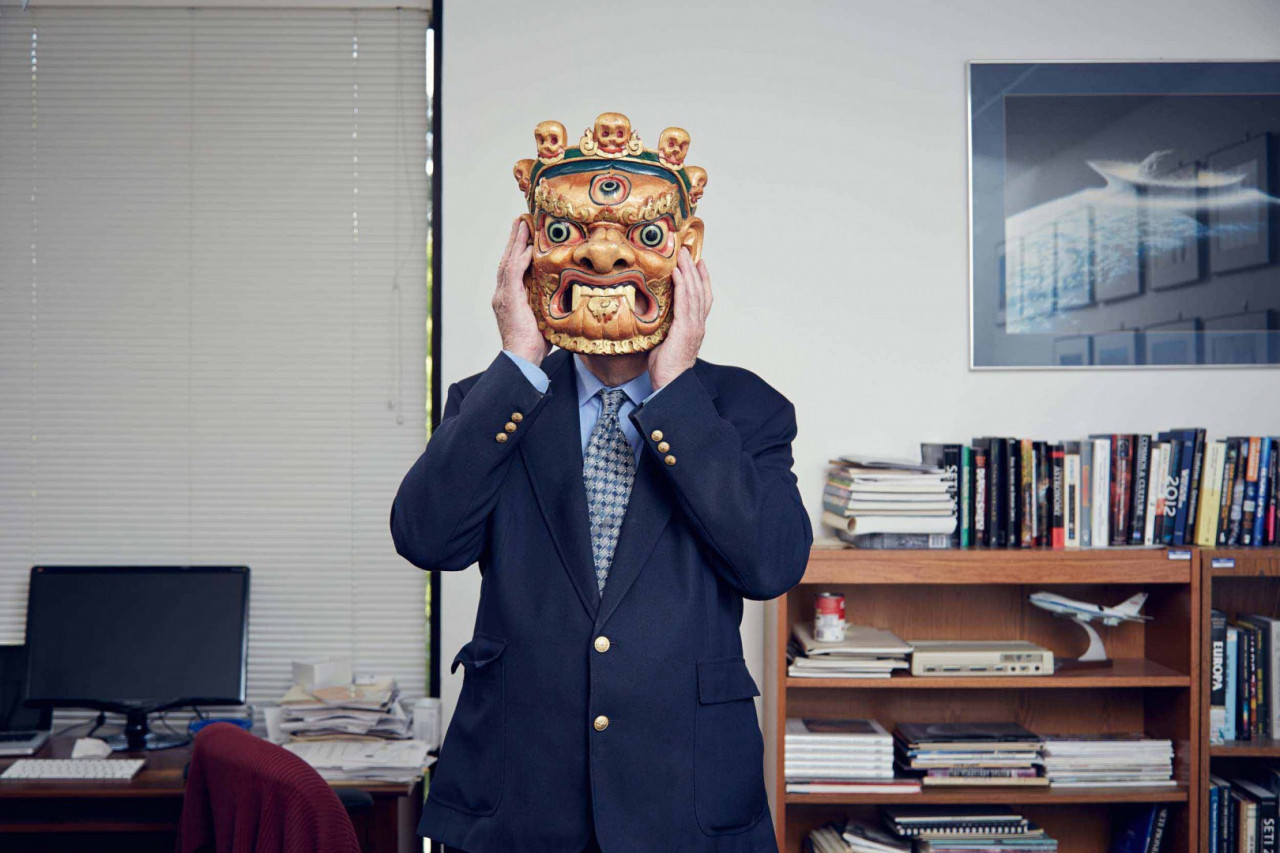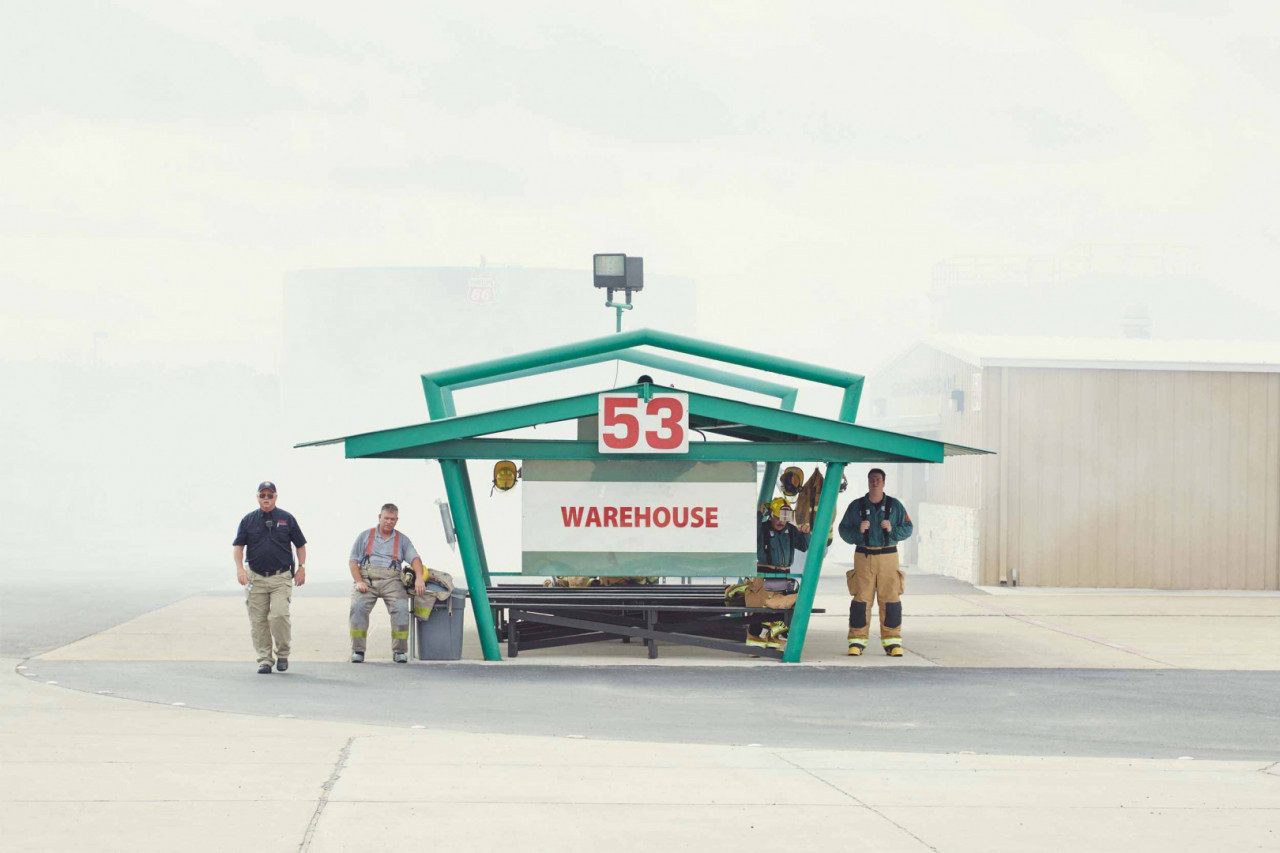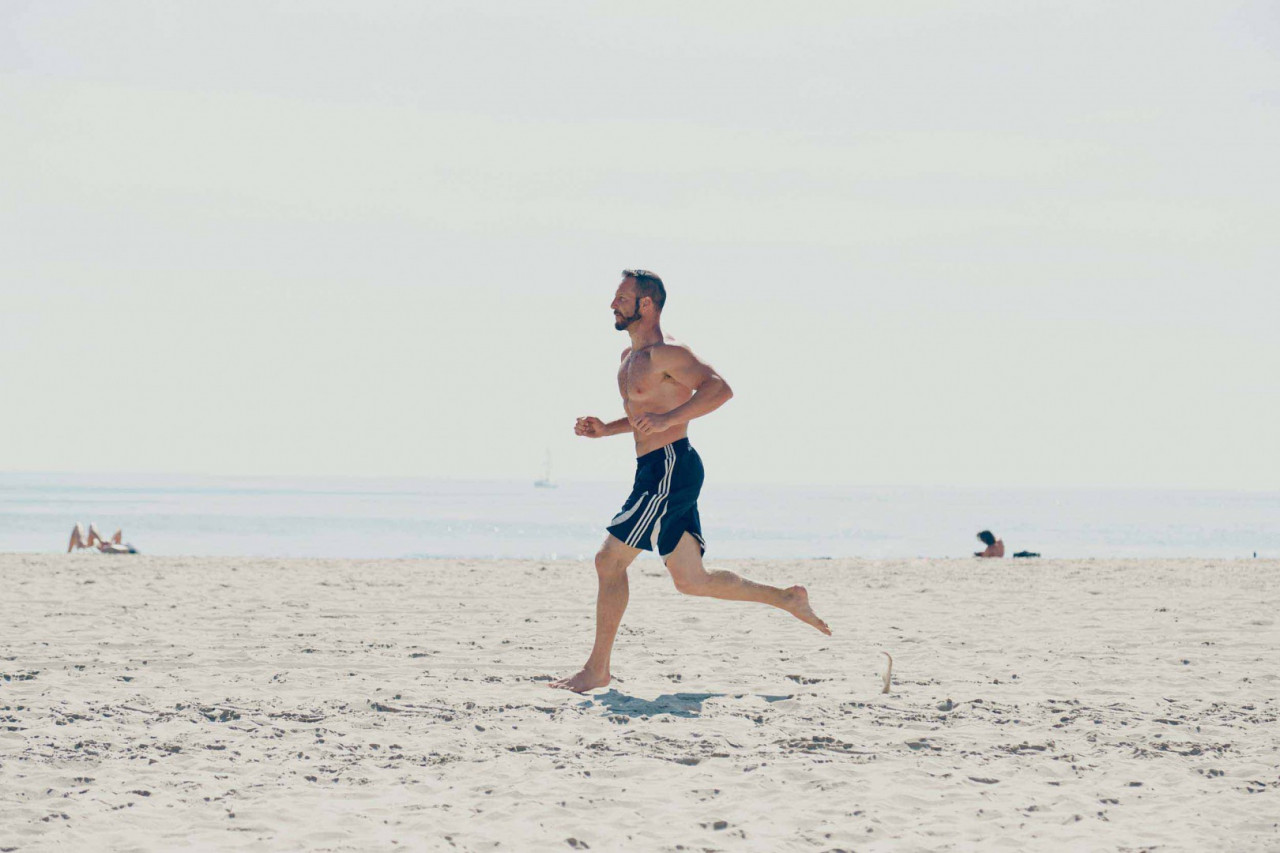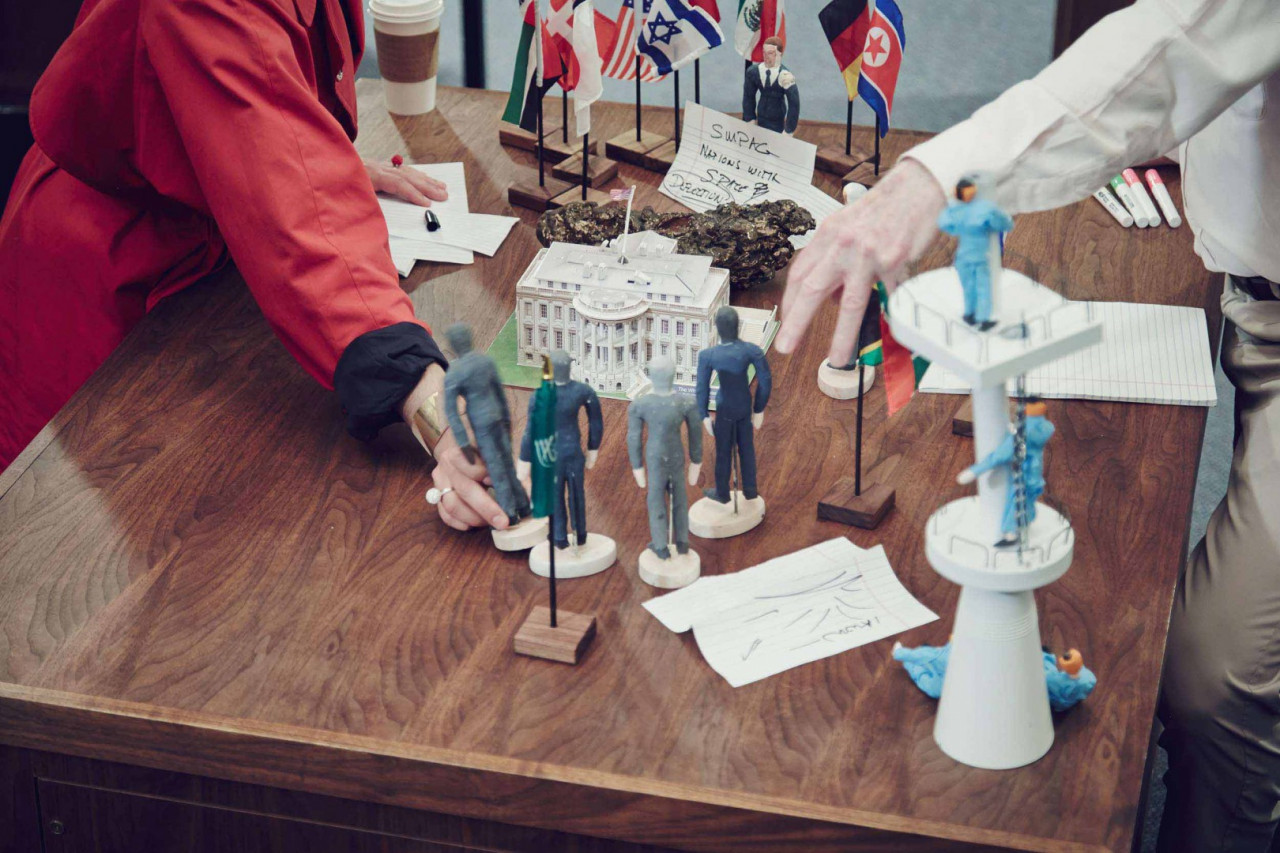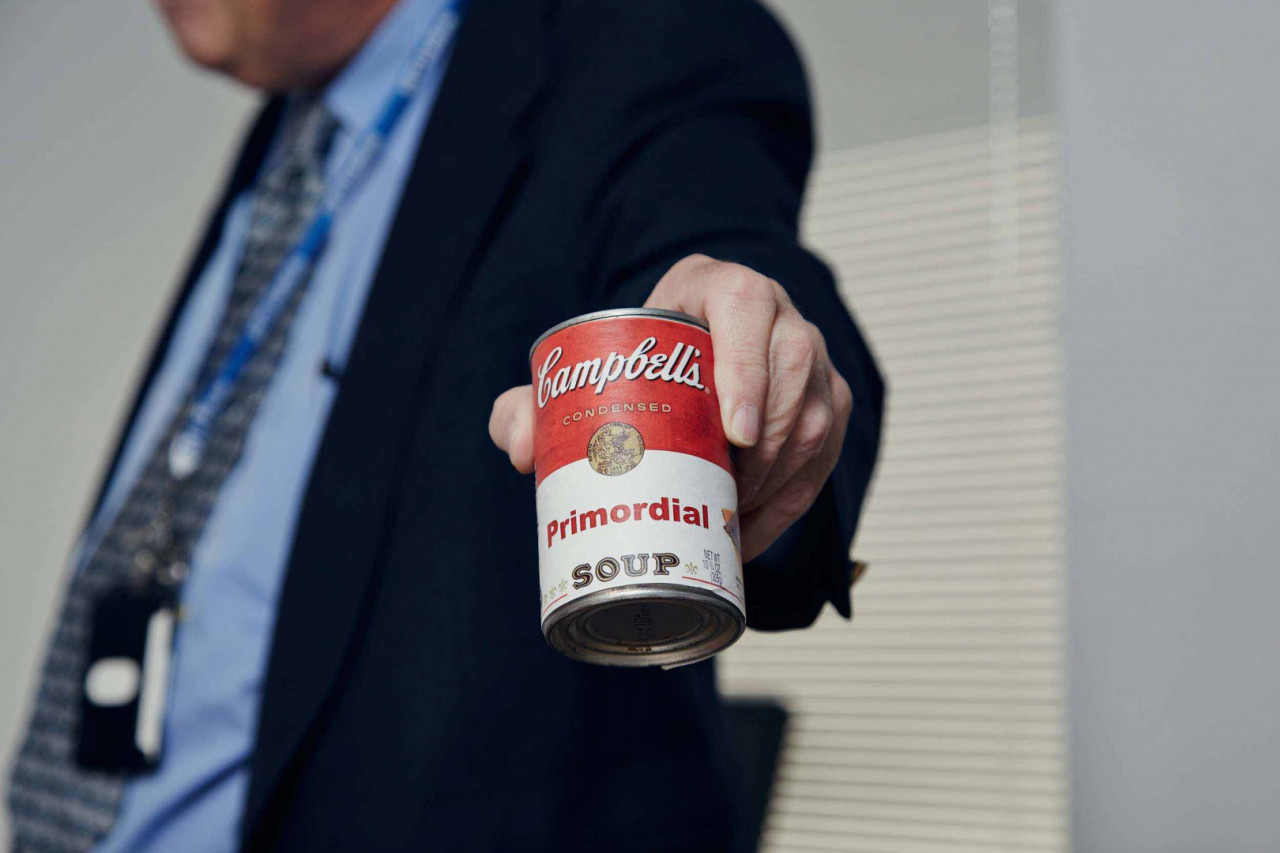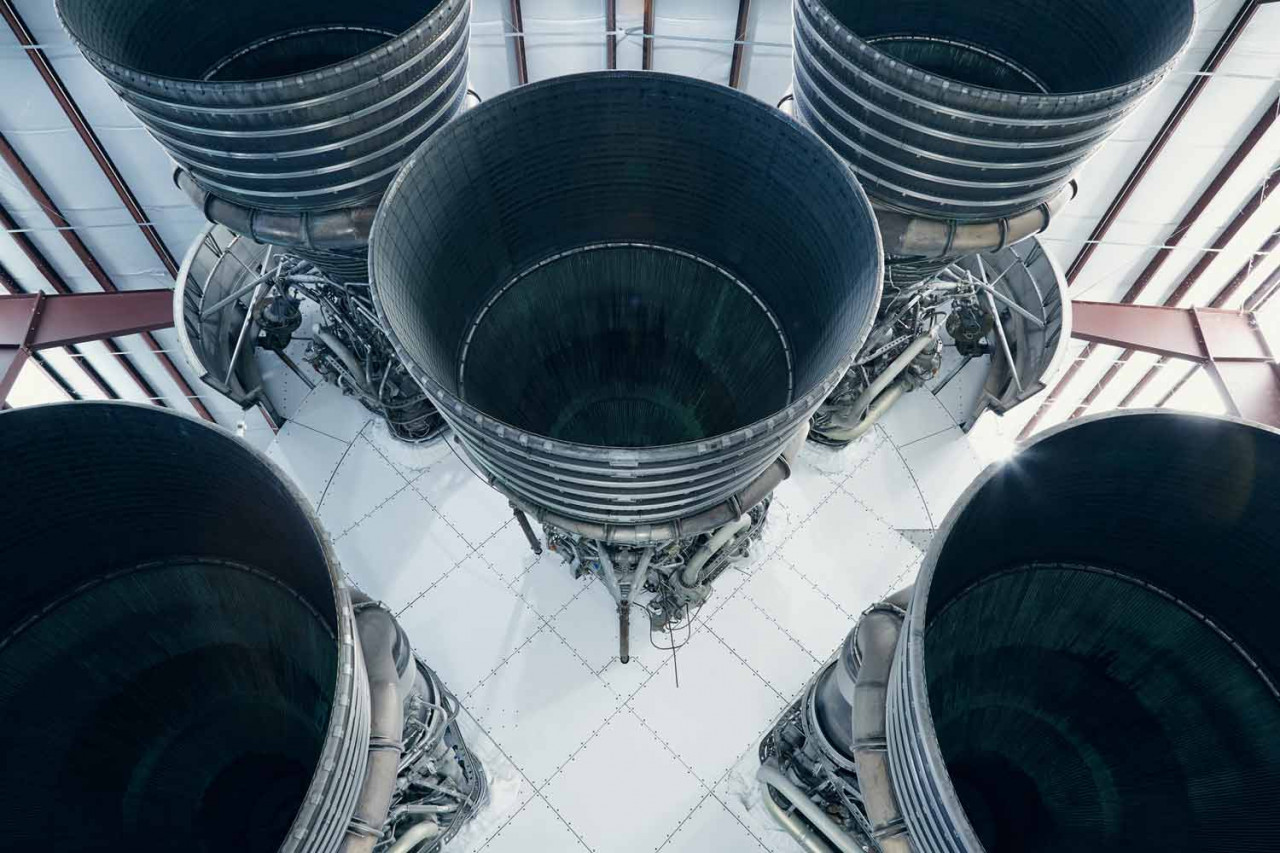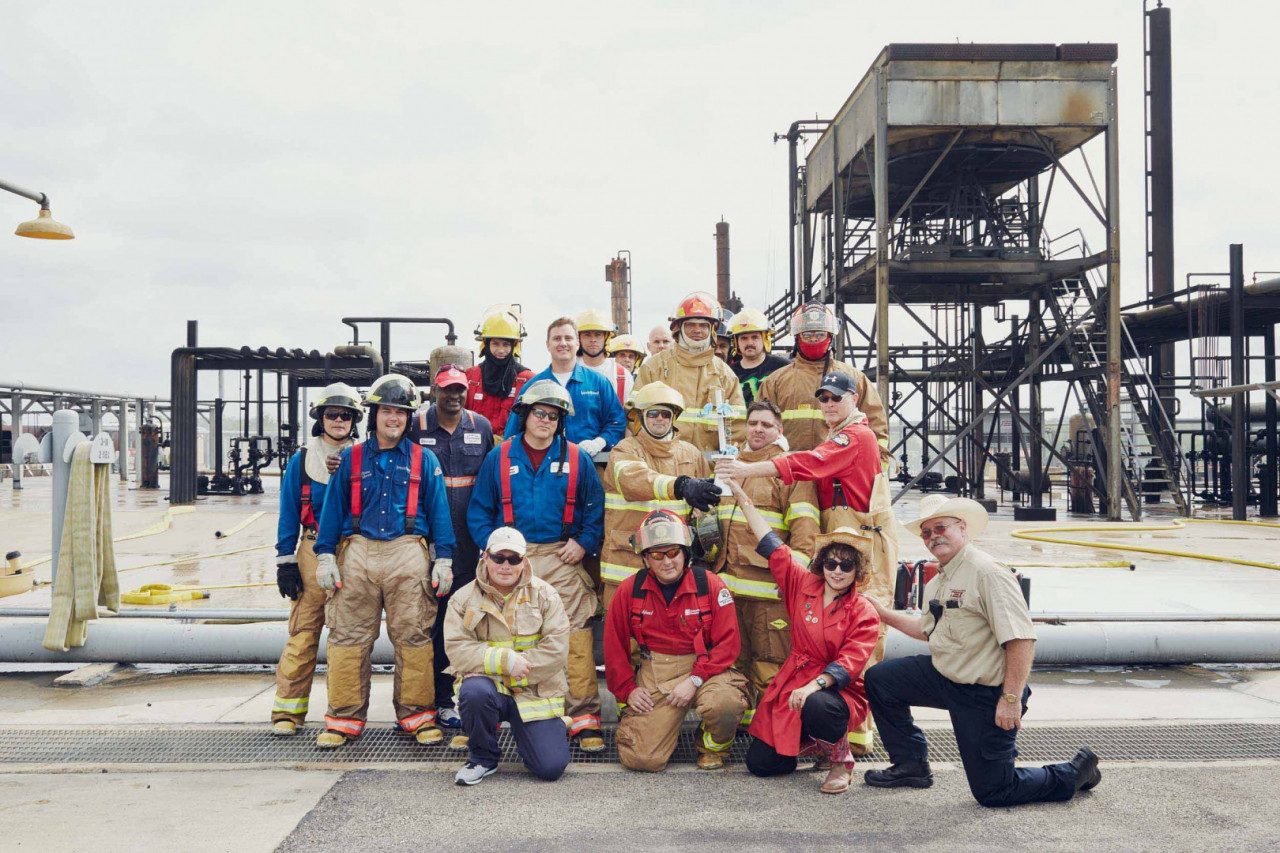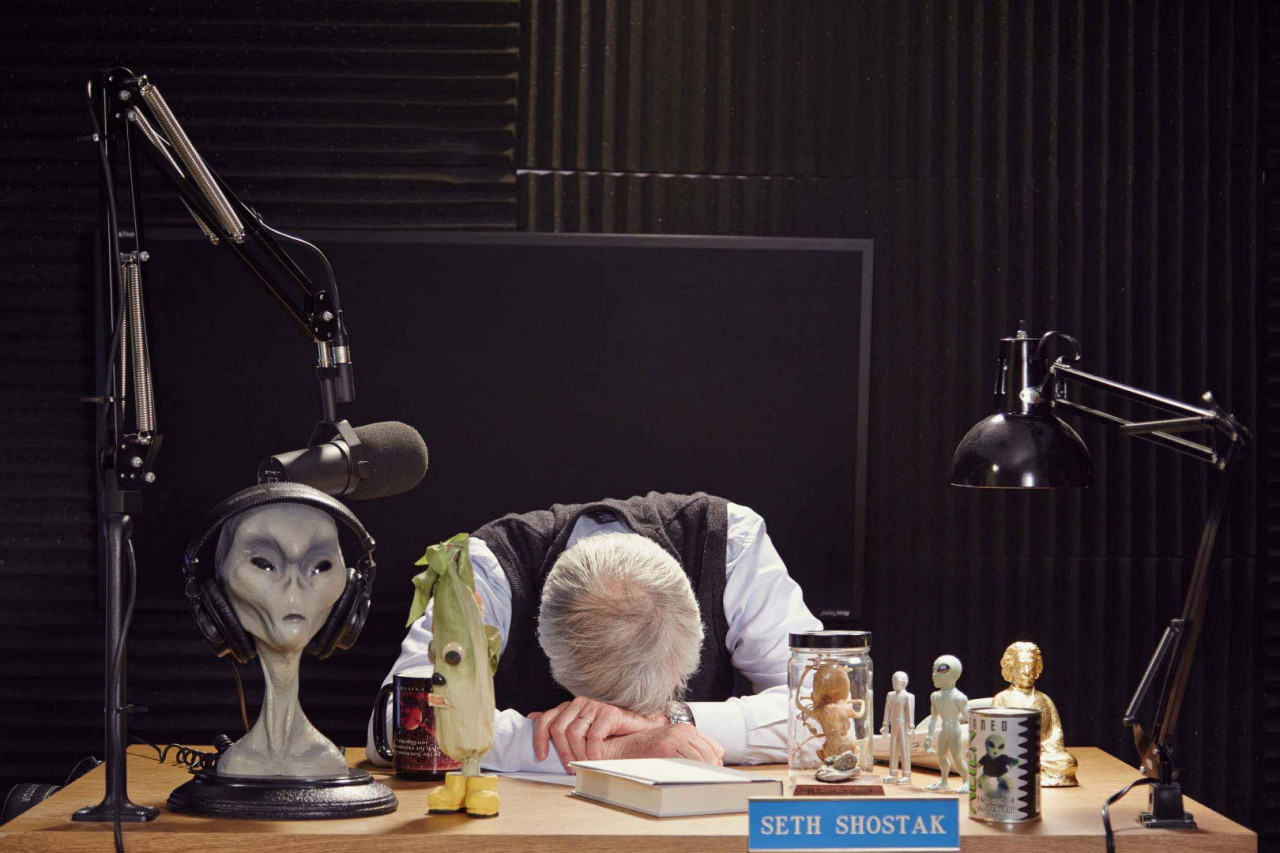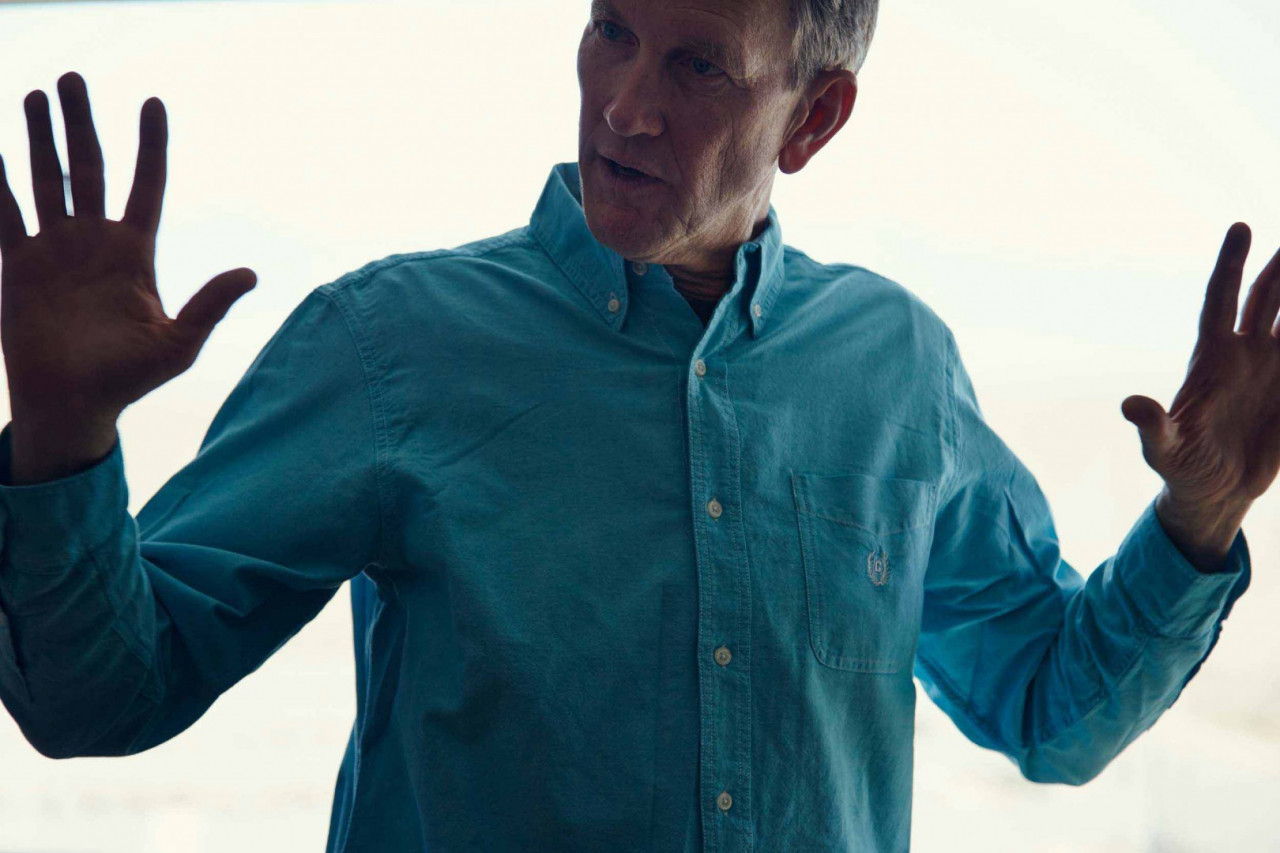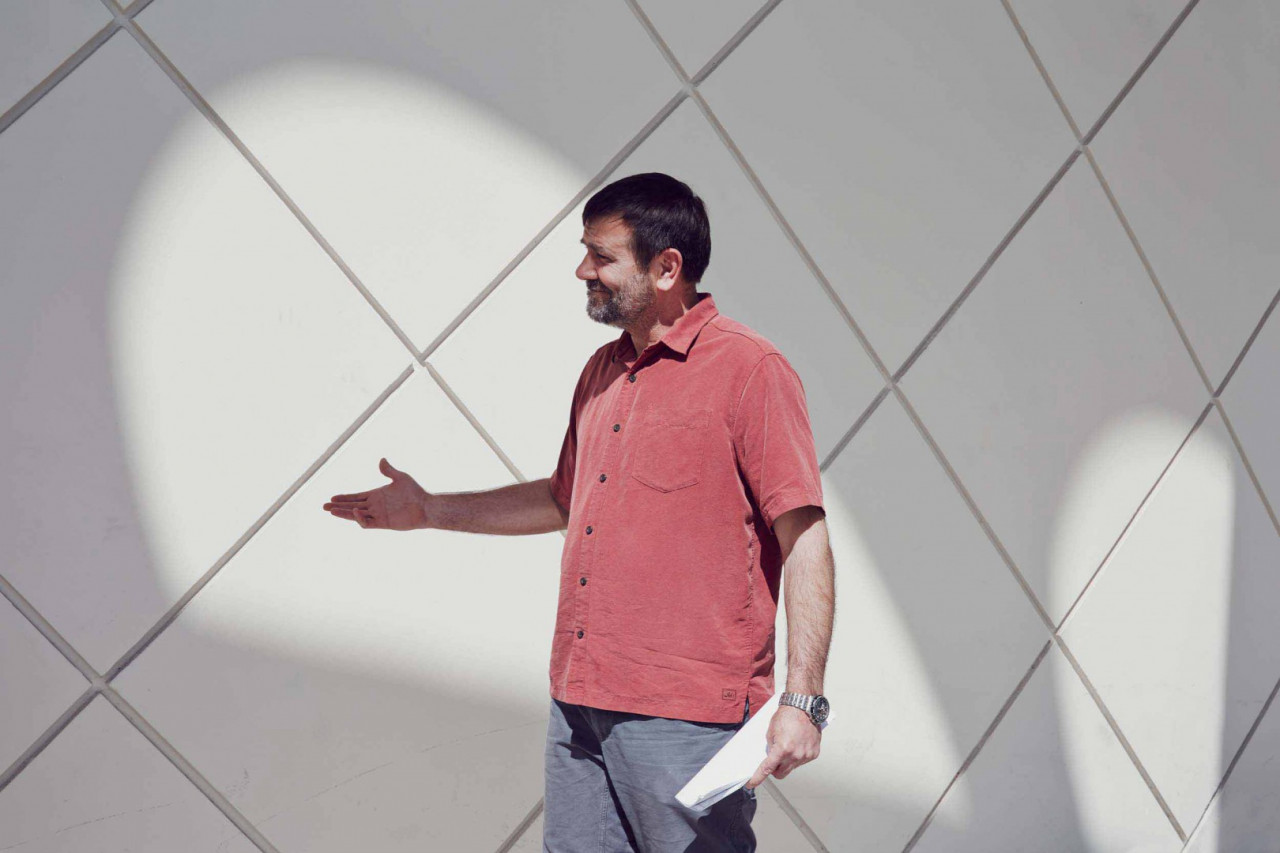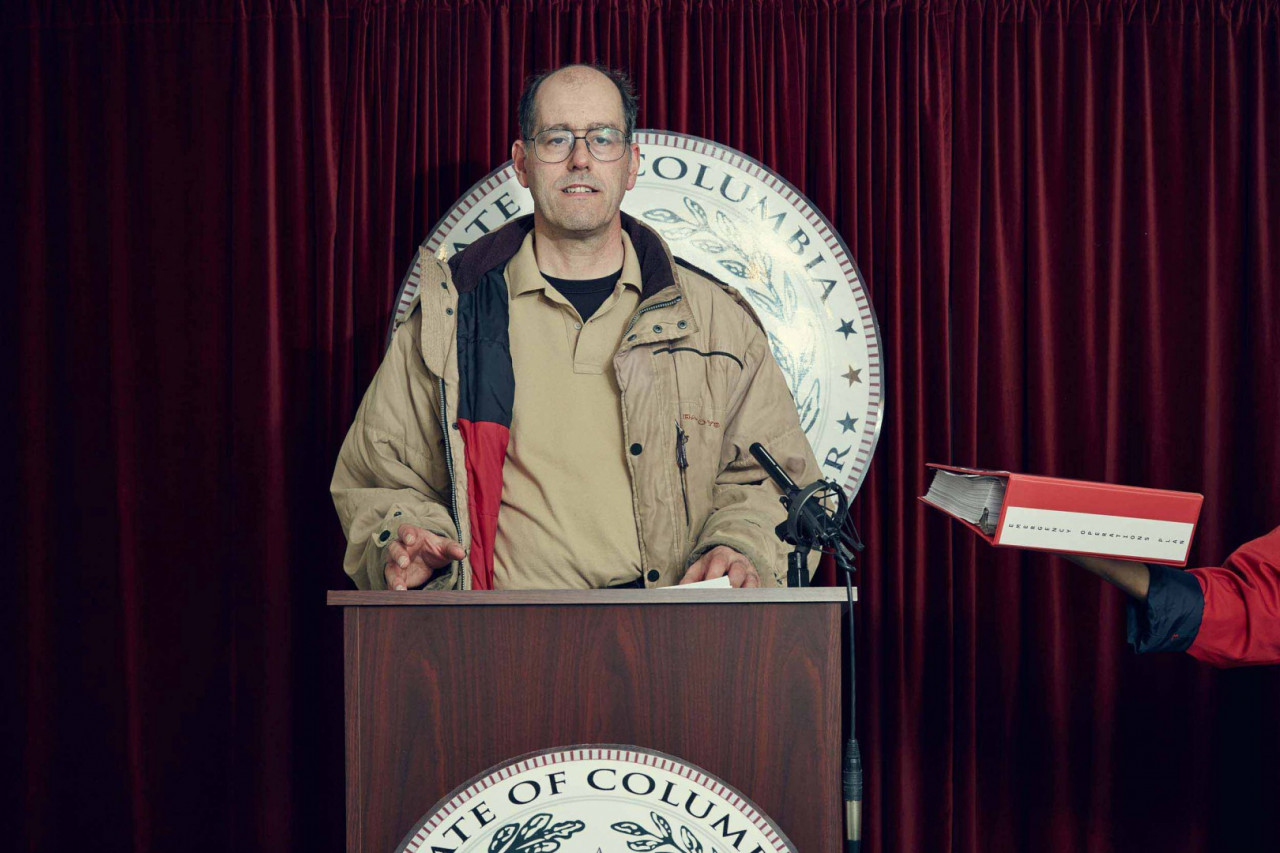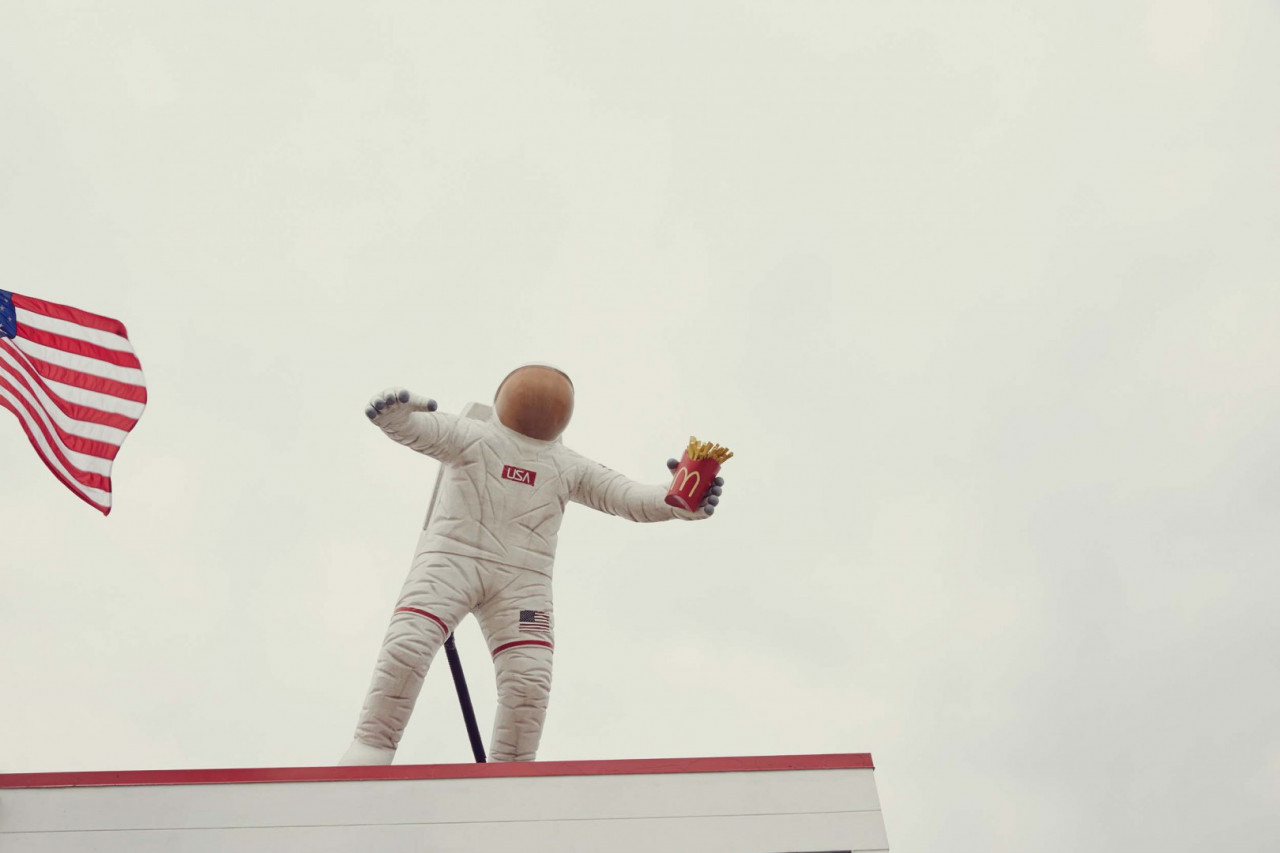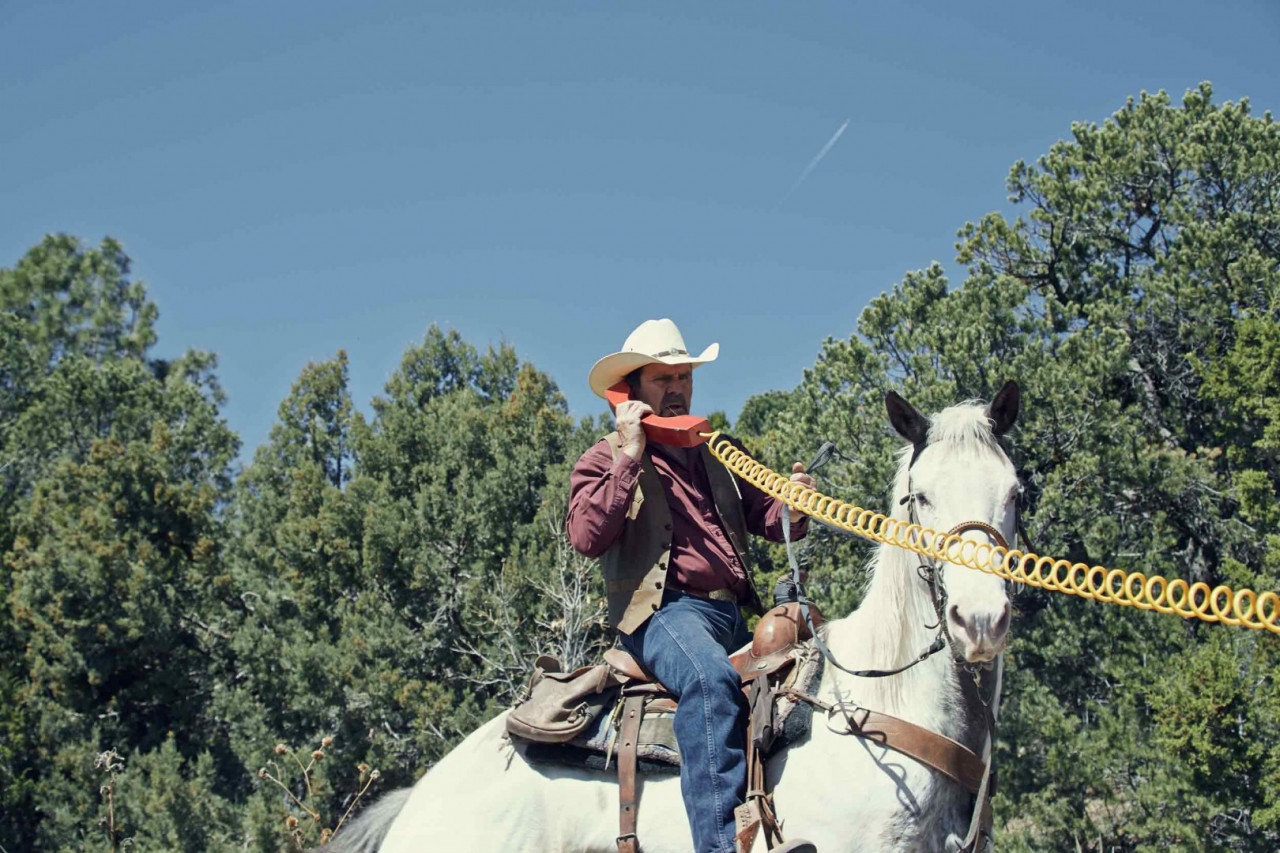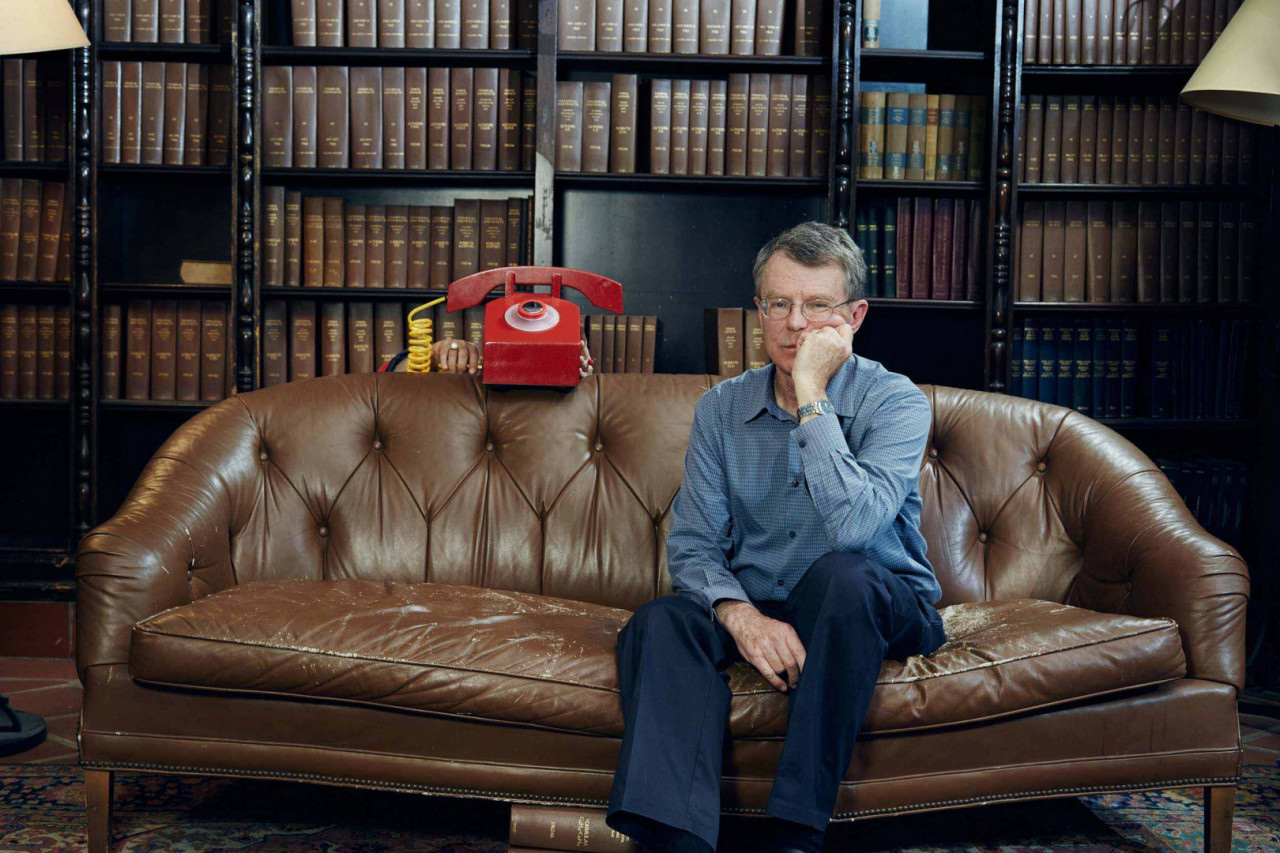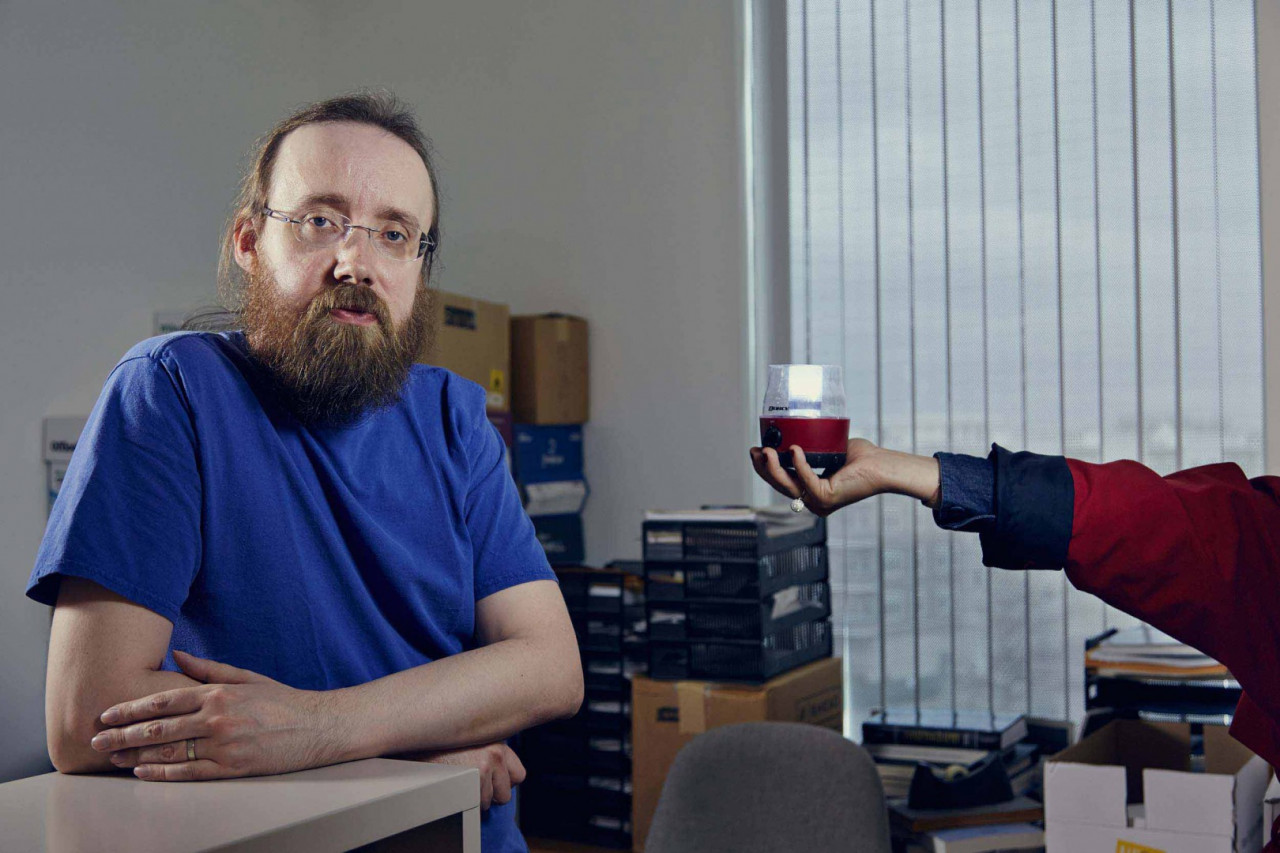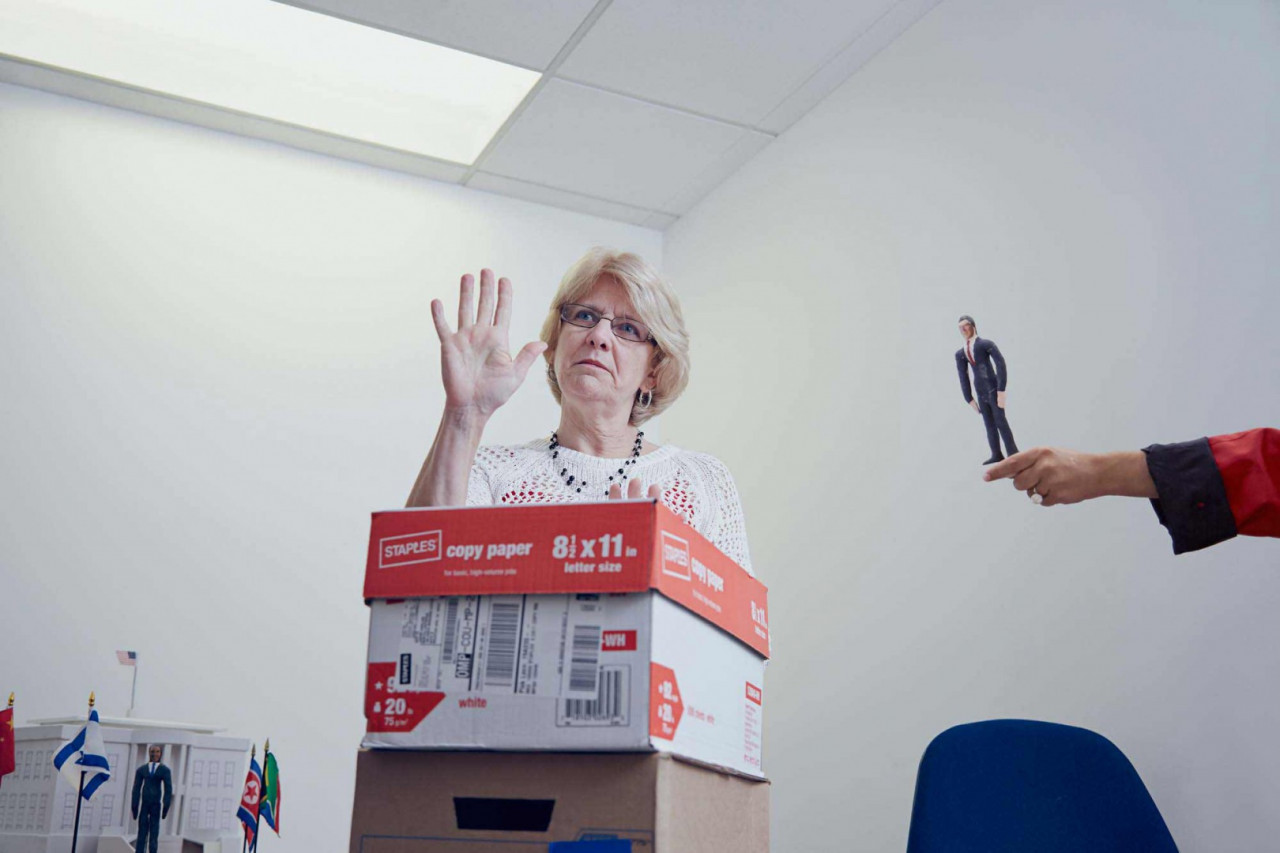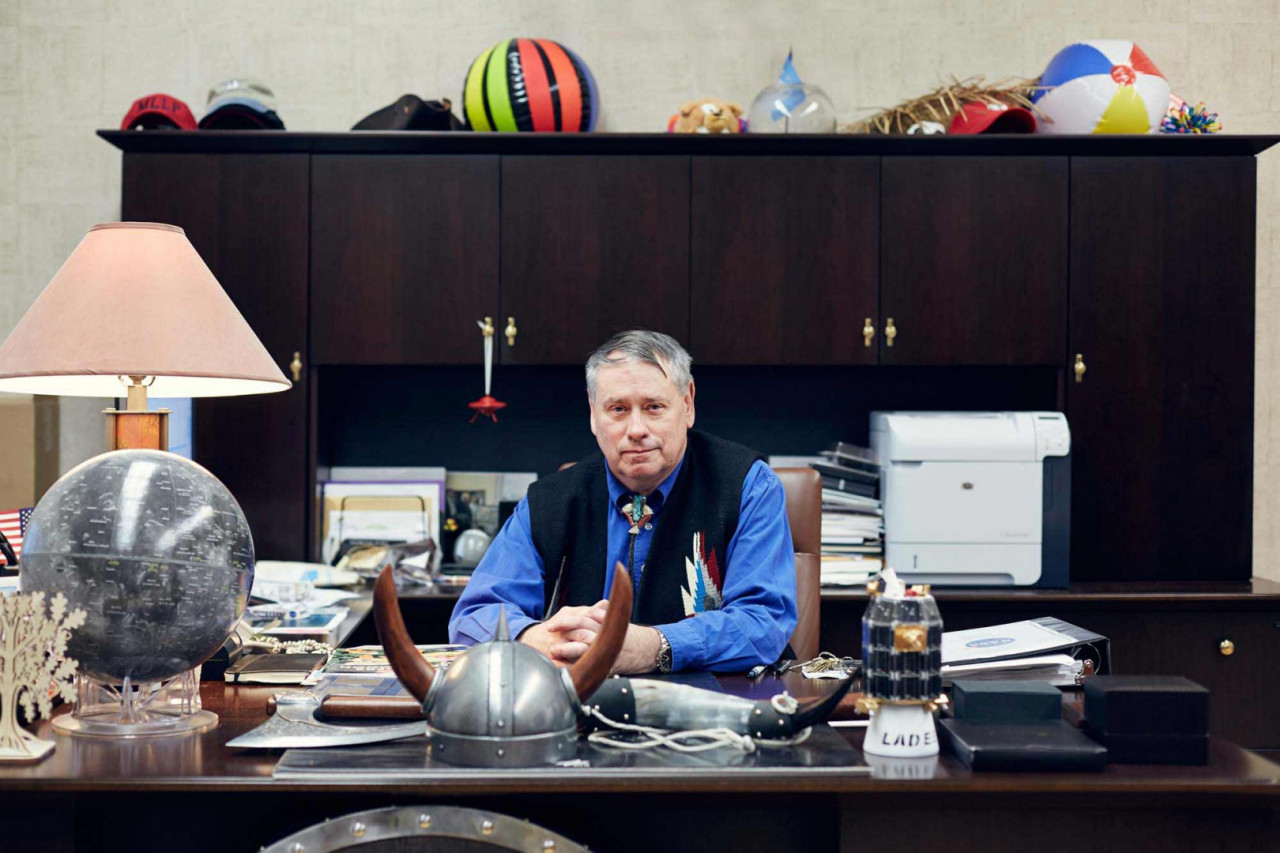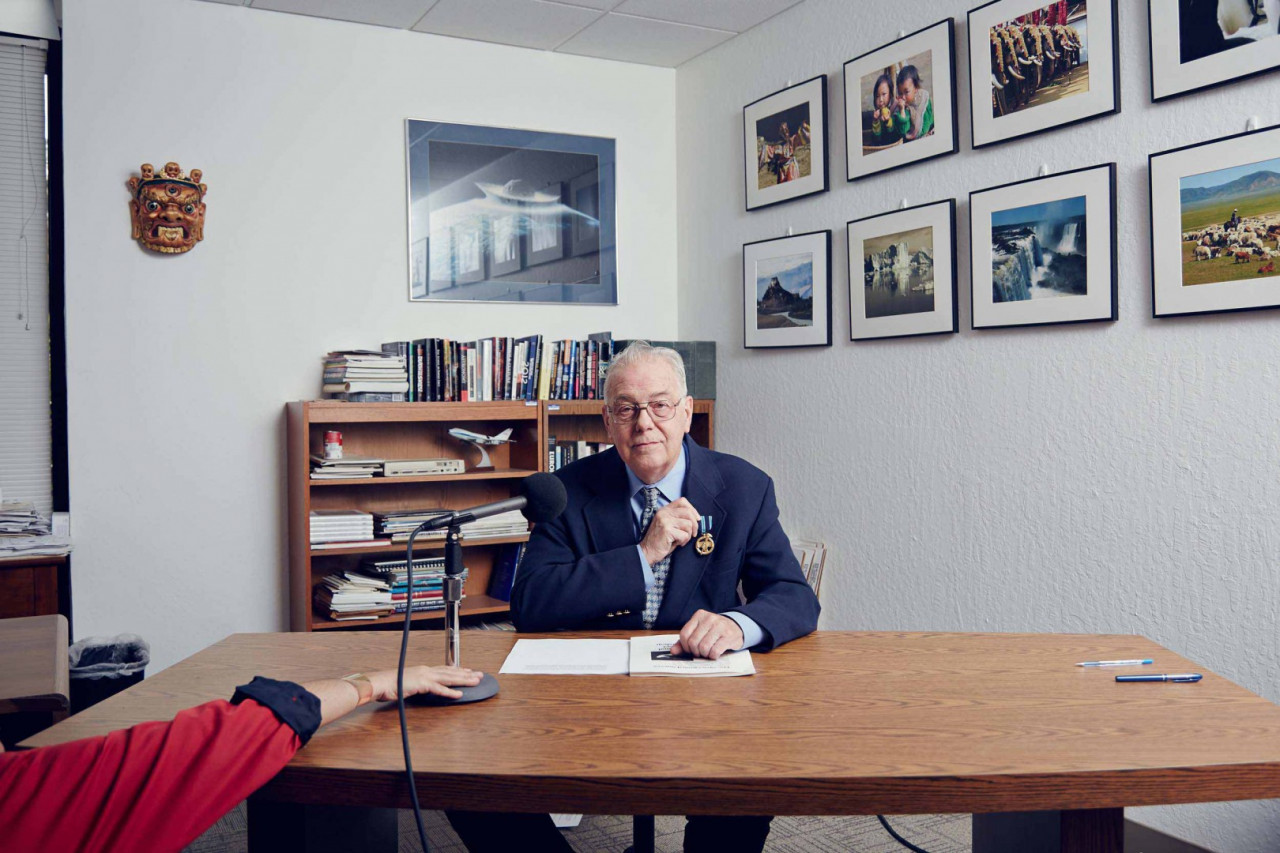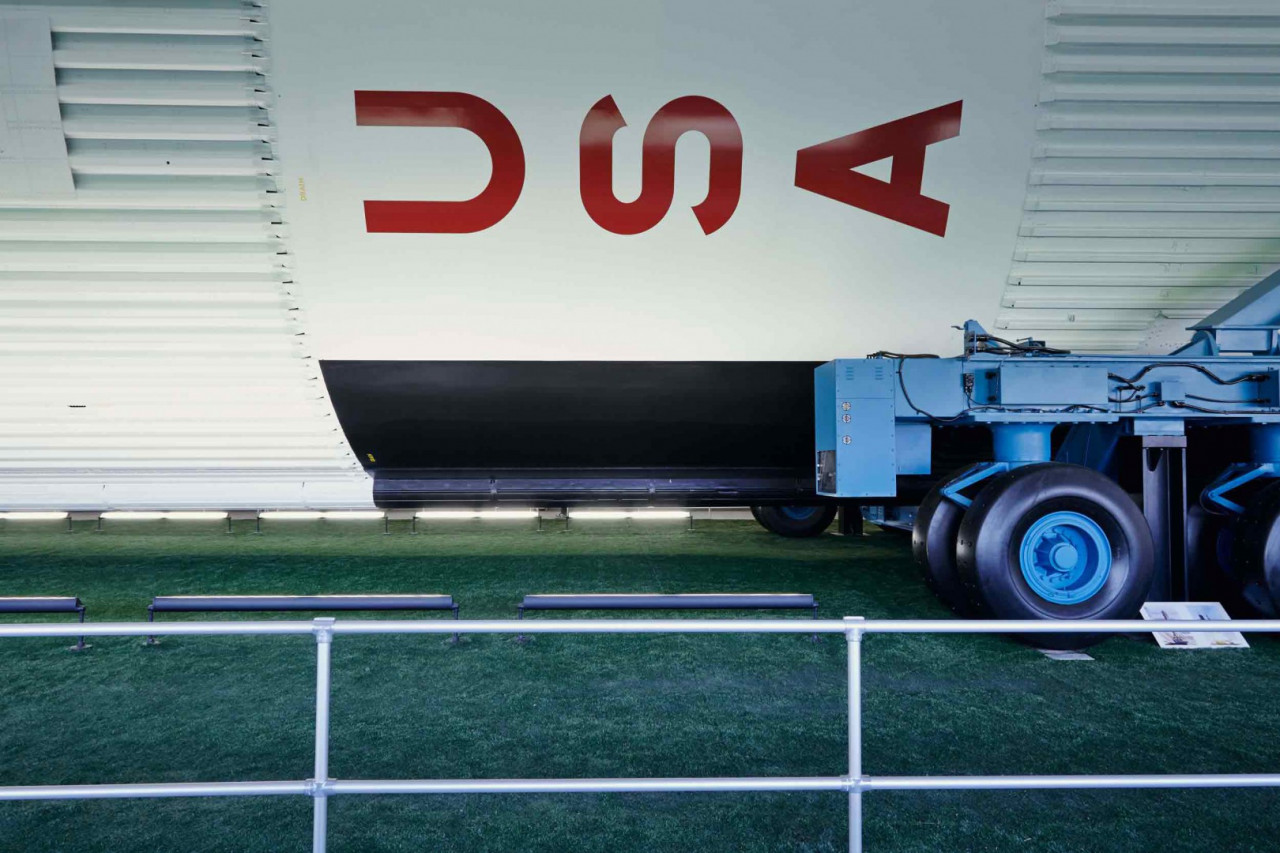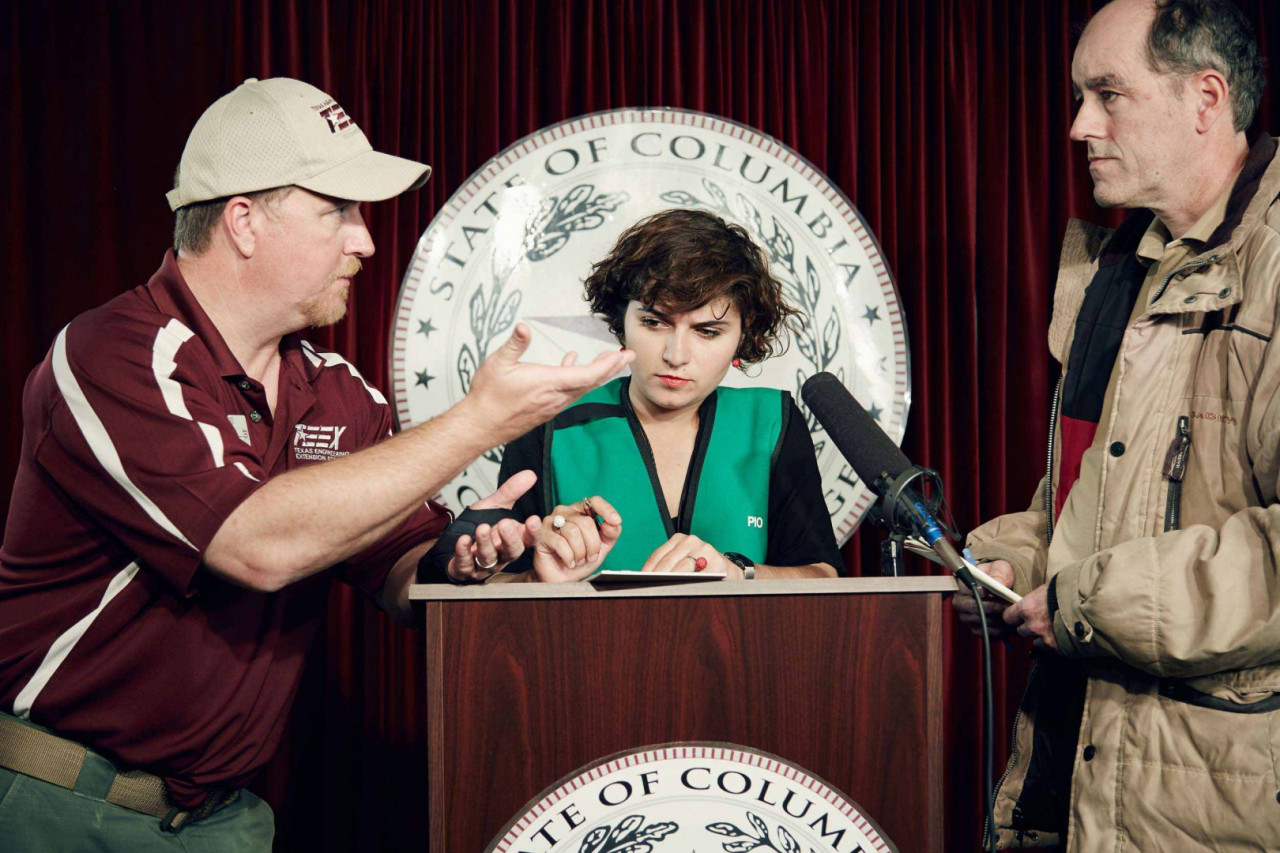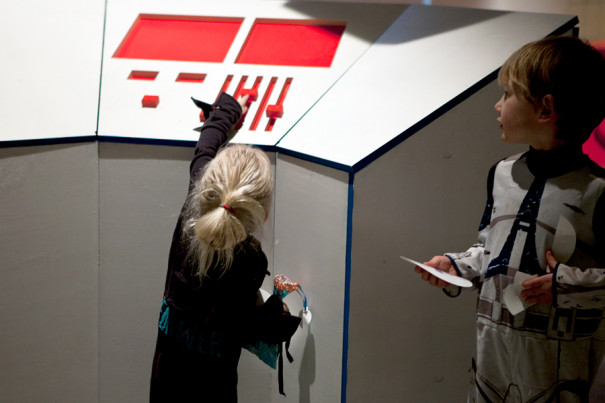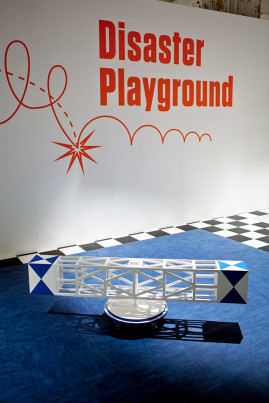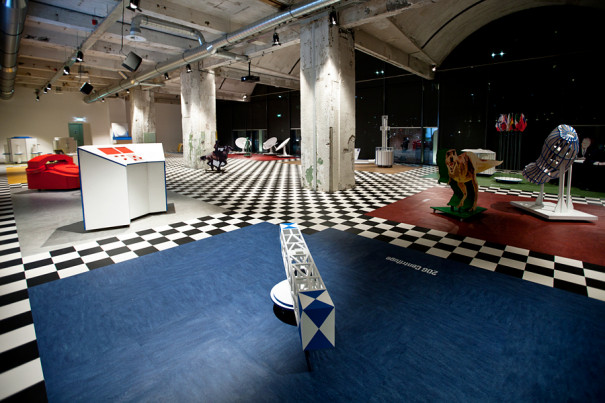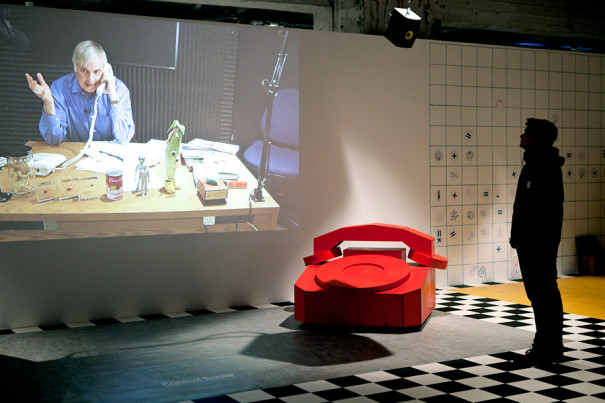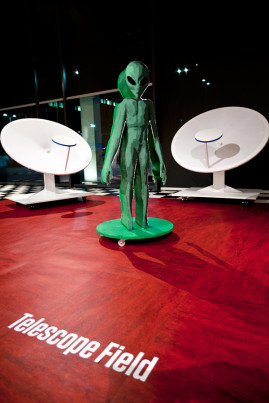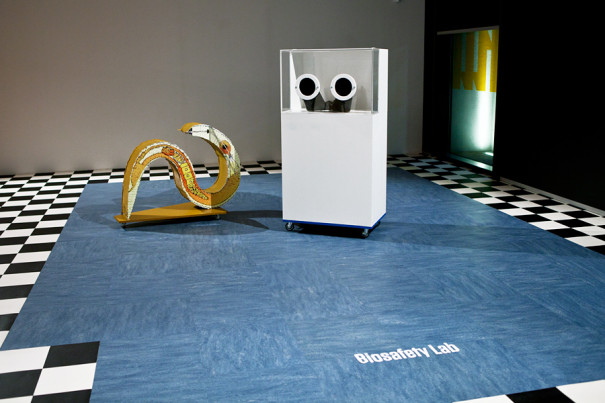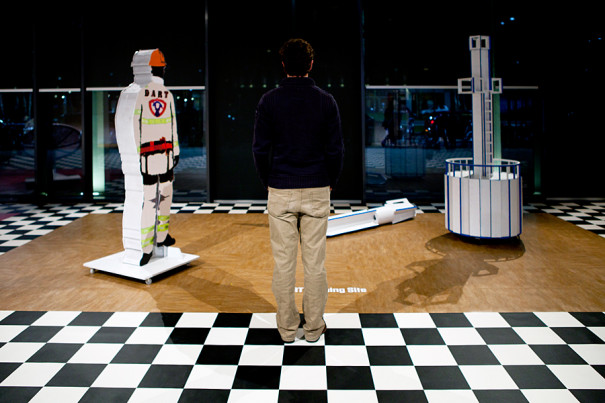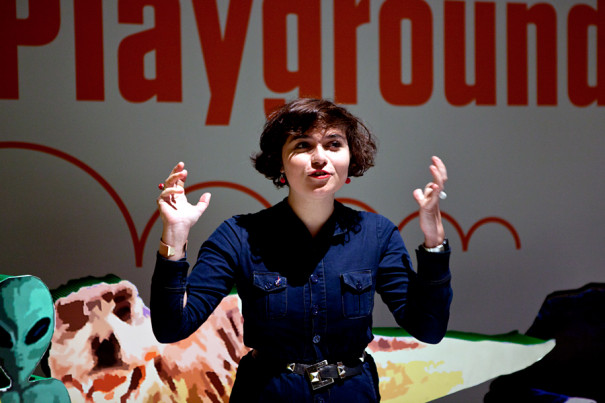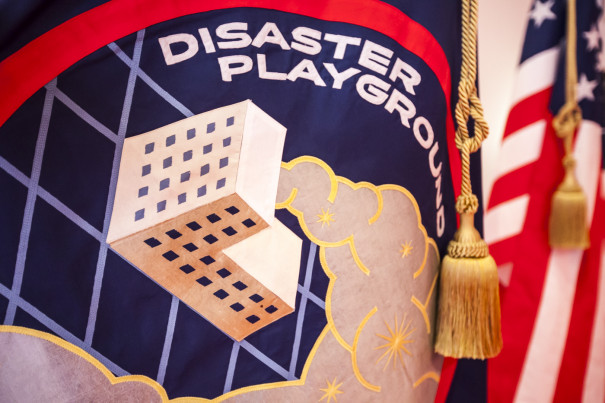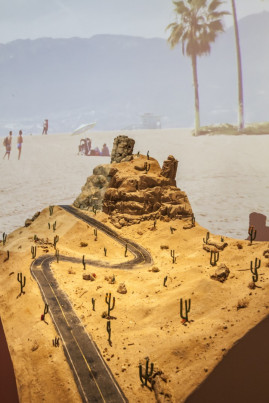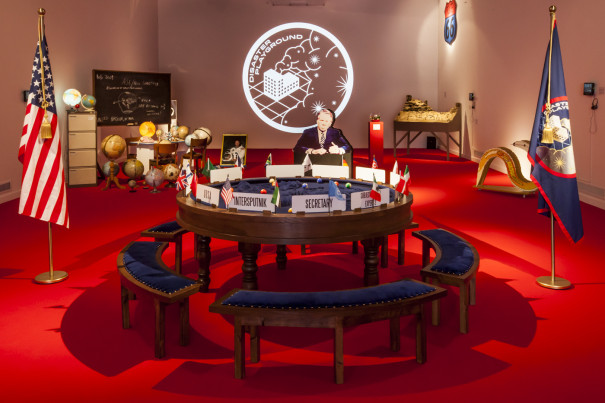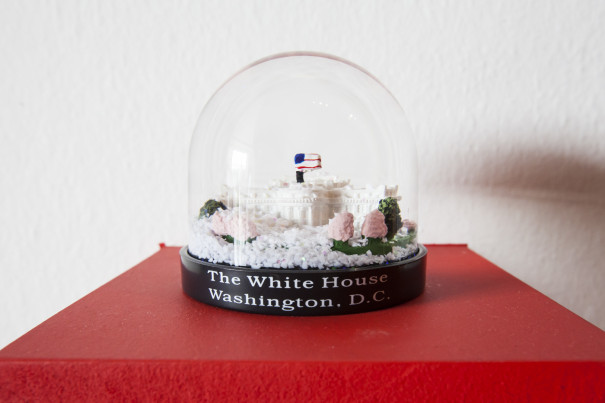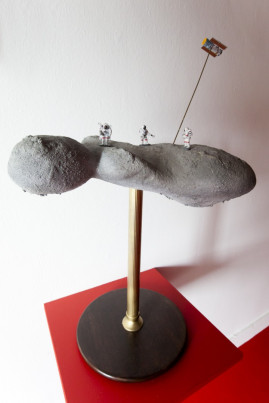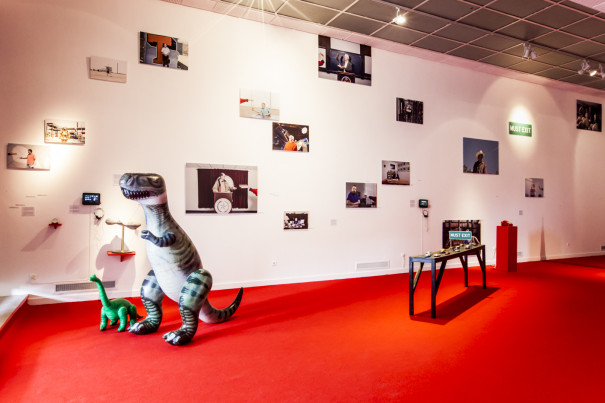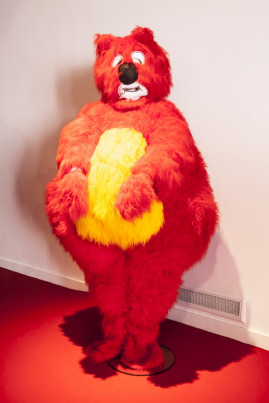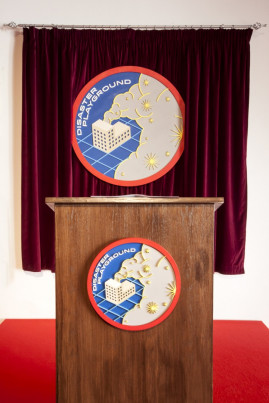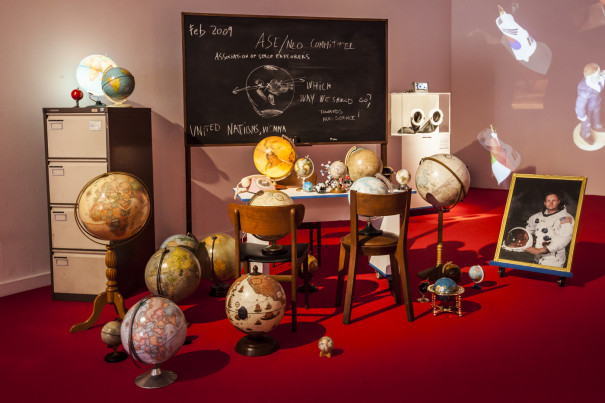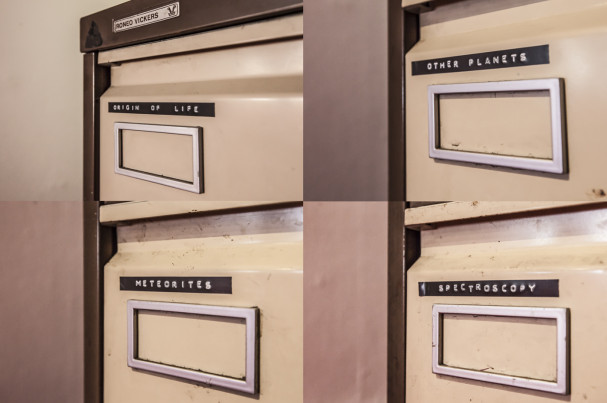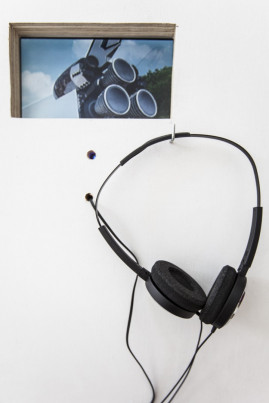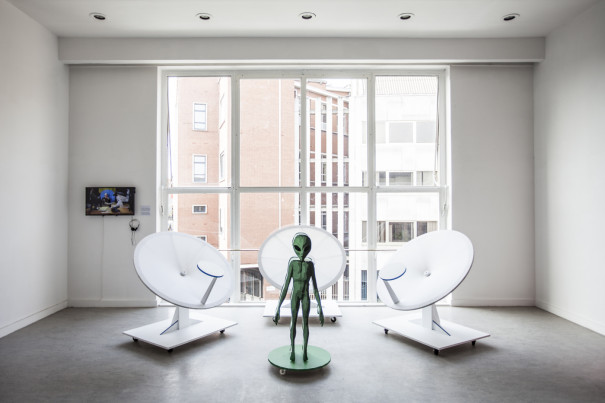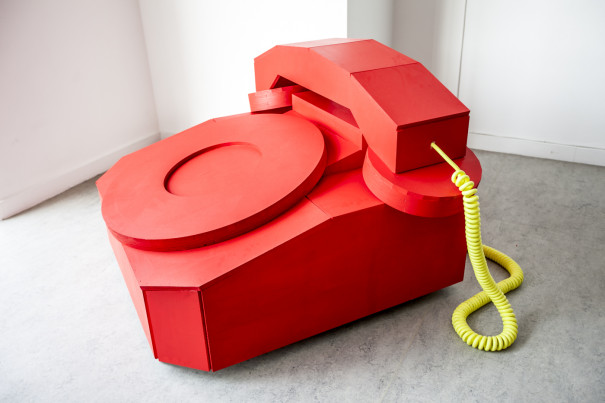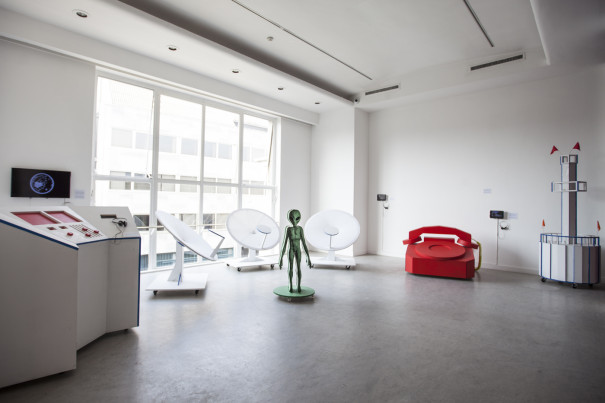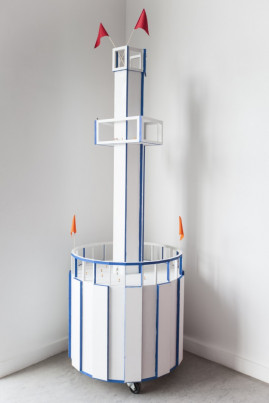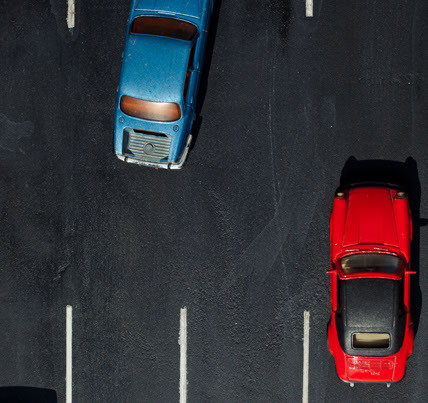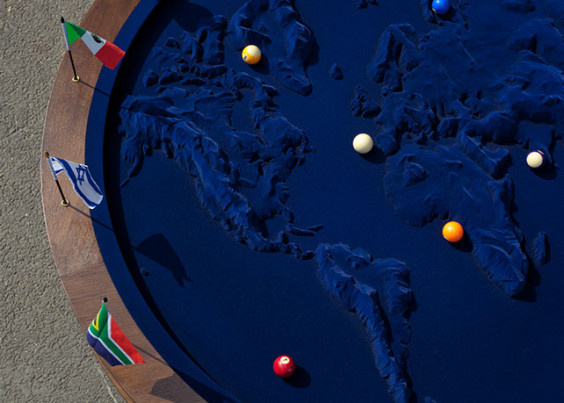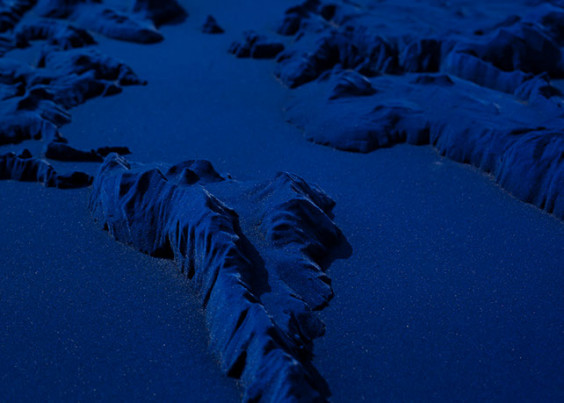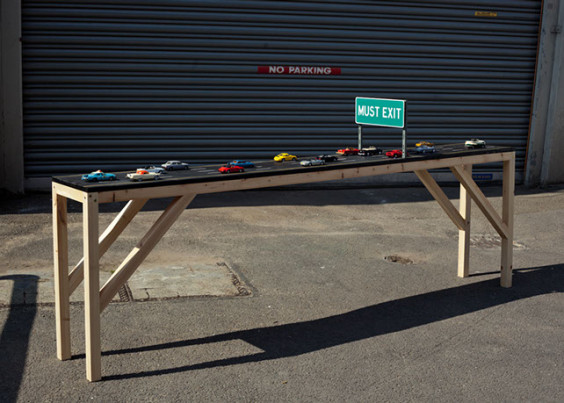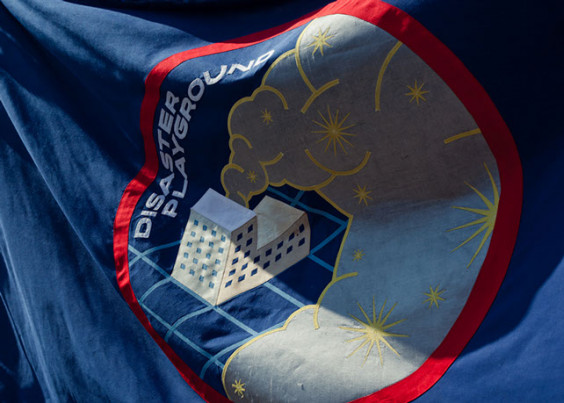Synopsis
Welcome to the real “Armageddon”
Hollywood relies on Bruce Willis to save the world in Armageddon, but who are the real-life heroes seeking to save our civilisation from the next major asteroid impact?
One of Indiewire’s six highlights of SXSW 2015, singled out by Janet Pierson as ‘pretty nuts’, Selected at Sheffield 2015 and raved by SoundOnSight as ‘bombastic’, Disaster Playground investigates future outer space catastrophes and the procedures in place to manage, assess, and minimize the risks.
We are so used to a particular version of disaster. We know what it looks like: Hollywood CGI. We know its characters: Bruce Willis as the ultimate hero, the scientist with terrible news, and the flawed president who is always presidential in a crisis. We know the dramatic rescues, the high-tech equipment, and the chain of command – that reassuring sense that someone, somewhere knows what to do…
The reality is, in fact, different. Disaster Playground is a ‘theatre of cruelty’, a critical platform where scientific surprise and its process can be more acclaimed than box-office success.
The film follows scientists leading the monitoring and deflection of hazardous Near Earth Objects and the real-life procedures in place in the event of an asteroid collision with the earth. From NASA and the SETI Institute to the White House and the United Nations, DISASTER PLAYGROUND follows the people who are responsible for protecting humanity from a potentially devastating asteroid impact.
Disaster Playground is a real film at the edge of space fiction: space decadence with a cutting edge approach through re-enactment of off-nominal situations by world-renowned space experts at NASA and the SETI Institute.
NEWS/PRESS
-
Investigation in Planetary Defense
June 2015 WeTransfer
Investigation in Planetary Defense: Nelly Ben Hayoun and WeTransfer launch Powers of Ten SEE THE POWER OF TEN SHORT VIDEOS ON WWW.WETRANSFER.COM In a desire to always look beyond, to inspire and to share multidisciplinary practices and the scales of innovation, WeTransfer announces the launch of the Power of Ten Series in collaboration with their Head of Experiences Nelly Ben Hayoun. The series is inspired by 1977 designers Eames’ short film ‘Powers of Ten’ in which they depict the Relative Size of Things in the Universe based on a factor of ten. A series of 18 original short films, presentContinue Reading »
-
San Francisco Premiere, Disaster Playground Screening
CA June 30th ROXIE Cinema SF USA
JUNE 30th, 7pm, SF PREMIERE, ROXIE CINEMA BUY TICKETS HERE Welcome to the real Armageddon! Hollywood may rely on Bruce Willis to save the world in Armageddon, but who are the real-life heroes seeking to save humanity from the next major asteroid impact? Screening & evening chaired by Alexander Rose, Executive Director Long Now Foundation Roxie Cinema: 3117 16th St, San Francisco, CA 94103, United States Roxie Cinema, San Francisco, TUESDAY 30th June at 19:00 ( World Asteroid Day ) also featuring Project Manager, Annette Rodrigues and Contributors, Apollo 9 Astronaut Rusty Schweickart, Dr David Morrison, Dr Margaret Race, DrContinue Reading »
-
Disaster Playground London Premiere at the BFI
June 30th London UK
Disaster Playground feature film will have its London Premiere at the BFI (British Film Institute) on June 30th, 8:30pm, Screening NTF1 Screening & Q&A featuring Nelly Ben Hayoun & Franck Marchis from The SETI Institute, Hosted by Guardian Design and Architecture Critic Oliver Wainwright, BFI Southbank - 30th June at 20:30 – NFT1 ( World Asteroid Day ) June 30th will also mark the world release of Disaster Playground on all digital platforms on www.disasterplayground.com BUY TICKETS HERE
-
The world of “extreme experience designer” Nelly Ben Hayoun
Design Week June 2015
The world of “extreme experience designer” Nelly Ben Hayoun We talk to Nelly Ben Hayoun, the “Willy Wonka of design” about harnessing volcanoes, collaborating with Space scientists and dealing with disasters. By Angus Montgomery on June 24, 2015, read the full article here “I believe that by taking an extreme approach you really get people to actively engage with something – and that is what motivates me.” Experience designer and director Nelly Ben Hayoun knows a lot about working at extremes. Among her projects so far have been a series of “semi-domesticated” volcanos, installed in people’s living rooms, and anContinue Reading »
-
Space-Rock Alert
June 2015 Nature
Review of Disaster Playground in Nature Magazine by Alexandra Witze . Read the full article here Step aside, Armageddon and Deep Impact: two films are in competition to be this generation’s seminal asteroid movie. Both offer crucial information about the asteroid threat to new audiences. Disaster Playground and 51° North are released widely on 30 June, the inaugural celebration of Asteroid Day — the anniversary of the 1908 meteorite explosion over Tunguska, Siberia. The event is meant to spread awareness of the threat of space rocks, repackaging the alarms that a small group of skywatching scientists have been issuing for decades.Continue Reading »
-
NBH at Google Talk
nelly at Google Talks
Watch Disaster Playground Director talk at Google as part of the Google Talks Series Nelly Ben Hayoun: Designing the Impossible. Dubbed the ‘Willy Wonka of Design and Science’, award-winning director and designer of experiences Nelly Ben Hayoun is a critical explorer, a fearless and passionate provocateur. In 2014 Wired magazine awarded her with a WIRED Innovation Fellowship for her work to date and its ‘significant impact on the world’ whilst in 2013, Icon Magazine touted Ben Hayoun as one of the 50 international designers “shaping the future”. Ben Hayoun’s many roles include the Designer of Experiences at the SETI (SearchContinue Reading »
-
UK Premiere Disaster Playground
June 8th 2015 Sheffield Doc Fest
UK Premiere documentary feature film ‘Disaster Playground’ at Sheffield Doc Fest, Sheffield Doc/Fest is “one of the top three documentary festivals and markets in the world”. Dubbed ” Cannes for documentary people” by IndieWire. Doc/Fest 2015 will run June 5th-10th 2015 Disaster Playground will screen: Vimeo Showroom 2 Jun 8th @ 16.45Book your tickets here: https://sheffdocfest.com/films/5867 Disaster Playground is selected in the ArteFact category that shows “A selection of artists’ factual work, pushing the boundaries of documentary as we know it.”
-
Interview NBH
The Interior Photographer_May 2015
Portrait/Interview of Nelly Ben Hayoun By Anna Steward for The Interior Photographer, Photo by Amandine Alessandra. Read the full article Nelly Ben Hayoun is a creator of extreme experiences. She has been called ‘the Willy Wonka of design and science’ due to her unconventional, highly ambitious projects that bring together different genres. She studied Design Interactions at London’s Royal College of Art and now lectures internationally and works with a highly impressive list of clients including leading museums and design centres. She is the Designer of Experiences at the SETI (Search for Extraterrestrial Intelligence) Institute, Head of Experiences at WeContinue Reading »
-
Feature Icon Design
April 2015 Italy
A special feature on NBH for Icon Design Italia, as part of the Milan Design Week, April 2015
-
The Life, The Sea and the Space Viking R&D, Disaster Playground Screening and Q&A
25/09/15 London Lydia and Manfred lecture hall v&A
V&A Digital Design Weekend 2015 Friday Late. A special event screening of Disaster Playground at the V&A, London; Lydia and Manfred Lecture Hall, Ben Hayoun will screen her lastest feature film and present audiences with a glimpse about her next project “The Life,The Sea and the Space Viking” The Digital Design Weekend (part of London Design Festival) is an event at the V&A bringing together artists, designers, engineers, scientists celebrating the intersections of art, design and technology. Installations, workshops, performances and family friendly activities will take place across the V&A’s galleries, exploring themes of civic design, sustainability and collaborative making. The weekend will be showcasing a newContinue Reading »
-
Private pre-Screenings
Berlin and London June 2015-Soho House
On Invitation Only, private Screenings at Soho House for members: DATE: Monday June 15 HOUSE: Soho House Berlin EVENT: Private screening of Disaster Playground followed by a space themed discussion with Nelly, hosted by Verena von Stackelberg (SHB cinema programmer) TALENT: Nelly Ben Hayoun DATE: Sunday June 21 HOUSE: Babington House EVENT: Screening the International Space Orchestra documentary and private screening Disaster Playground film . Nelly to attend to introduce/ hold discussion/science talk with Helen Keen after the screening TALENT: Nelly Ben Hayoun, Helen Keen DATE: Monday June 22 HOUSE: Soho House EVENT: An introductory talk by Nelly Ben Hayoun before a screening of International Space Orchestra documentary TALENT: NellyContinue Reading »
-
The Life, The Sea and the Space Viking R&D
On May 5th, World Renowned Marine Biologist and Ted Prize Winner Dr. Sylvia Earle, President of submersible company Doer Marine Liz Taylor and Ian Griffith, acclaimed Icelandic Post-rock band Sigur Ros (Big Dipper Management), Two Time Grammy Awarded Winner Evan Price are visiting NASA AMes Research Center, NASA SSERVI and the SETI Institute as part of NBH Studio new project R&D; The Life, the Sea and the Space Viking. A Space Odyssey and Viking Saga 11km under the sea, documenting a submersible expedition and an encounter with our biological archeology. Merging the fields of astrobiology, terraforming and the research ofContinue Reading »
-
International Space Orchestra recording orbits Earth
Nelly Ben Hayoun’s first feature film The International Space Orchestra’s recording is now in space International Space Orchestra member, trumpet player BJ Navarro, Assistant Chief, Flight Systems Implementation Branch at NASA Ames Research Center, was able to arrange to put the International Space Orchestra (ISO) music in space. Literally. On Tuesday, May 5th, BJ received amazing pictures from ESA Astronaut Samantha Cristoforetti who brought the ISO music Compact Disc to ISS. The pictures show the ISO CD orbiting the earth on board the ISS, experiencing ZERO G inside the Cupola. A big thanks to Astronaut Samantha Cristoforetti!
-
‘Disaster Playground’ takes a gonzo look at the end of the world
Sound On Sight
Disaster Playground reviewed on Sound on Sight, read the full review here Thermonuclear warfare, famine via overpopulation, zombie apocalypse. Doomsday scenarios exist dearly in human consciousness as evidenced by the plethora of films, television seriesand literature that chronicle it. While it prevails in art, few go about their lives thinking about the realities of a world ending calamity such as a mile wide asteroid. How does the world react? What is the chain of command? Who will really save mankind? As the creators behind Disaster Playground prefer to put it, the heroes of armageddon aren’t found in Bruce Willis orContinue Reading »
-
SXSW Film: Disaster Playground
Free Press Houston
Disaster Playground film review on Free Press Houston, read the full article here Disaster Playground, which had its world premiere last Friday night at SXSW 2015, investigates possible disaster scenarios involving space objects hitting out planet. As directed by Nelly ben Hayoun the film takes a humorous approach to the subject by getting the interviewees to appear on camera with props like a toy dinosaur or a large red telephone. Among the participants in Disaster Playground, and also attending the screening were Apollo 9 astronaut Rusty Schweickart; Dr. Franck Marchis, Senior Planetary Astronomer, SETI Institute; Dr. Peter Jenniskens, Meteor Showers Specialist, SETI Institute,Continue Reading »
The Cast
-

DR. DAVID MORRISON
Director of The Carl Sagan
Center, SETI Institute -

JOHN W BOYD
Senior Advisor to the
Centre Director,
NASA Ames Research Center -

DR. S PETE WORDEN
Director
NASA Ames Research Center -

DR. JOSÉ LUIS GALACHE
Astronomer
Minor Planet Center -

DR. PETER JENNISKENS
Meteor Astronomer
SETI Institute -

ERIC CHRISTENSEN
Principal Investigator,
Catalina Sky Survey -

DR. MARGARET S RACE
Senior Research Scientist
SETI Institute -

DR. GARETH WILLIAMS
Associate Director
Minor Planet Center -

DR. DONALD YEOMANS
Manager of the Near-Earth object program office,
NASA JPL -

TONY CRITES
Program Director,
Texas A&M Engineering
Extension Service -

DR. STEVEN CHESLEY
Astrodynamicist,
Near-Earth Object Program, NASA JPL -

DR. PAUL CHODAS
Astrodynamicist Near-Earth Object Program NASA JPL
-

DR. FRANCK MARCHIS
Senior Planetary Astronomer
SETI Institute -

PATRICK DONNELLY
Amateur Astronomer
Fremont Peak Observatory -

LINDLEY N JOHNSON
NEO Programs Executive
NASA HQ -

DR. SERGIO CAMACHO LARA
Former Director UN Office for
Outer Space Affairs -

DR. MARK BOSLOUGH
Physicist
Sandia National
Laboratories -

DANIEL D. MAZANEK
Senior Space Systems Engineer NASA Langley Research Center
-

RUSTY SCHWEICKART
Apollo 9 Astronaut
Chairman Emeritus B612 Foundation -

WILL WELCH
Communications Manager
Texas A&M Engineering Extension Service -

PROF. GARY RUVKUN
Professor of Genetics Harvard Medical School
-

DR. SETH
SHOSTAKSenior Astronomer &
Director of the Center for SETI Research, SETI Institute -

DR. JACOB
COHENChief Scientist
NASA Ames Research Center -

DR. DAVID
KRINGLunar and Planetary Institute
-

DR. JILL
TARTERBernard M.Oliver Chair SETI Institute
-

PETER ROBINSON
Computer Scientist
NASA Ames Research Center -

DR. ALAN HILDEBRAND
Planetary Scientist
The Full Team
DIRECTOR AND CONCEPT
Nelly Ben Hayoun
PRODUCER
Lisa James
EXECUTIVE PRODUCERS
John Tobin & Mat Trivett – Broadway
Co-commissioned through Broadway’s Near Now programme
CO-PRODUCED BY
Disaster Playground and Nelly Ben Hayoun Studio
IN ASSOCIATION WITH
Evolve Media
EVOLVE MEDIA
Tommy Maples – Producer
Trevor Dudeck – Producer
PROJECT MANAGER
Annette Rodrigues
EDITOR
Alice Powell
DIRECTOR OF PHOTOGRAPHY
Catherine Goldschmidt
1ST CAMERA OPERATOR
Fiona Braillon
1ST SOUND RECORDIST
Nikolas Zasimczuk
MUSICAL DIRECTOR (INTERNATIONAL SPACE ORCHESTRA)
Evan Price
SOUND DESIGN
Cliff Rossiter
PHOTOGRAPHY
Nick Ballon
PROP MAKING
Arthur Wilinski
EXHIBITION PROP MAKERS
Craig Barrow
Kieren Jones
Barbara Lascelles
Stephen Tomlinson
Hugo Sterk
Duygu Ozturk
Andrew Friend
Clemens Winkler
COSTUME
Ruby Rocks
CAMERA OPERATORS
Jacob Hamilton
Zsolt Csendes
SOUND RECORDISTS
Marcin Tyszka
Andras Krucsai
ASSISTANT PRODUCER
Liboni Munnings
EDIT ASSISTANT
Chris Dobbins
PRODUCTION ASSISTANTS
Nick Schwyter
Chelsea Miller
William Felker
Aurielle Perlmann
ANIMATION
Jean Julien
WEB DESIGN AND GRAPHIC DESIGN
Protoplot
Gerard Rallo
Maria-Inès Chevallier
DISASTER PLAYGROUND POSTER DESIGN
Machine
DISASTER MARKETING AND PUBLICITY
Caroline Cullern
Wetransfer
Protein
Riemy Wan
SCIENTIFIC ADVISORS
Dr. Franck Marchis
Dr. Seth Shostak
Dr. Peter Jenniskens
TECHNICAL ADVISOR
Carolina Blake
FILM TRANSCRIPT
Cathy Mears
POST PRODUCTION BY
Sonic Films
COLOURIST
Colm O’Rourke
MUSIC BY
Ed Banger Records & Because éditions
TITLE TRACK
Breathe – Performed by The International Space Orchestra
Music written by Liam Howlett, The Prodigy
AMERICA
Written by Jean Baudrillard, courtesy of Verso Books
Supporters
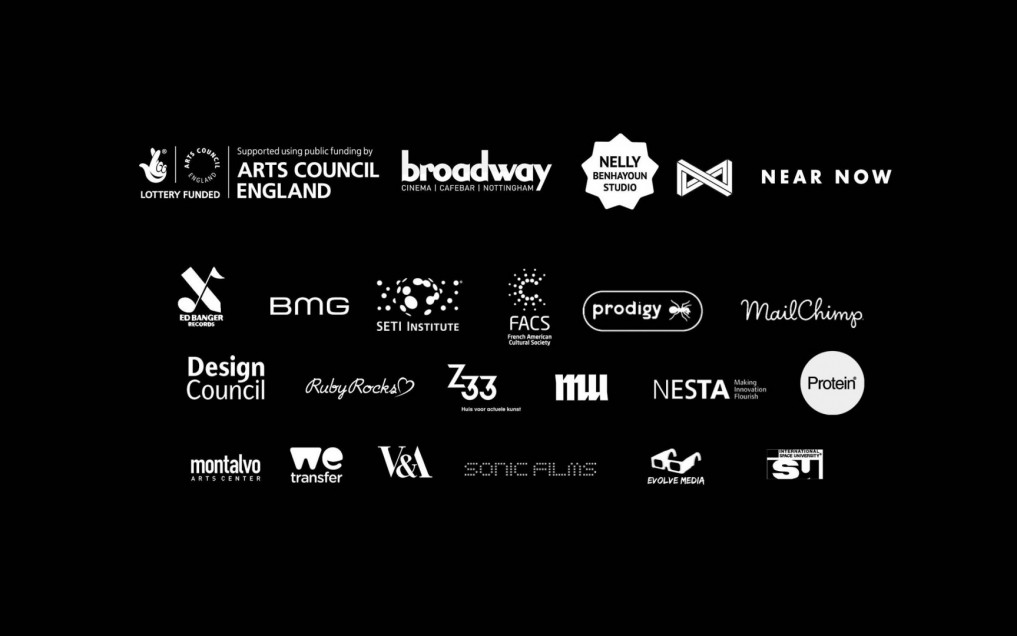
The Platform
Disaster Playground has been designed as a creative critical platform with ranges of hybrid outcomes. The documentary feature film ‘Disaster Playground’ is the main component of the platform.
1- DISASTER PLAYGROUND THE FEATURE FILM
Disaster Playground investigates future outer space catastrophes and the procedures to manage and assess the risks. The film follows the scientists planning the monitoring and deflection of hazardous Near Earth Objects and the real-life procedures in place in the event of an asteroid collision with the earth. Follow the chain of command that runs from the SETI Institute and NASA to the White House and United Nations and meet the people who are responsible from protecting us from a potentially devastating asteroid impact. World Premiere at SXSW in March 2015.
4- DISASTER PLAYGROUND EXPERIENCE: A SPACE DECADENCE
Enactments and theatrical performances with an invited audience developed in situ with local Disaster Assistance and Rescue Team (DART). Script and production design based on fieldwork and Disaster Playground feature documentary.
With DJ SET in collaboration with Ed Banger Records
Enter the Channel Zero and experience how modern demolition can become wonderful. Guided by Mickey Mouse, a horde of cowboys and space-vikings enter the threshold and act as the president over extraterrestrial asteroid attacks. From the office to the White House, from the observatory to the United Nations, members of the audience will make the call. This Site Specific Immersive Experience will be for release in 2016 with a world premiere in London.
6- GALLERY INSTALLATION EXHIBITIONS
A tourable and evolving physical manifestation of Disaster Playground inspired by the production set from the feature film. The installation evokes the scale and theatricality of the disaster sites used for training, offering the public a gallery based and physical experience. The Gallery Installation features a series of original films shot specifically for the live event and featuring top NASA and SETI scientists. This exhibition was commissioned and presented by the Victoria and Albert Museum in London and Z33, House for Contemporary Arts, Belgium. The exhibition is currently touring.
2-INTERNATIONAL SPACE ORCHESTRA PERFORMANCE
A live concert with the International Space Orchestra based upon the thematics of the project with composers at Moshi Moshi Records and Ed Banger Records. Date to be confirmed.
7-‘POWER OF 10′
Based on Designer and filmaker Eames’ film, the Power of Ten series, a series of 18 original short films in which Director Ben Hayoun asked asteroid hunters for a Power of Ten relevant to their research. The films are commissioned by file transfer service We Transfer. With sixty six million active users a month, the Power of Ten Series at We Transfer will challenge the digital sphere for their critical opinion. These films will be released in March and April 2015
5- DISASTER PLAYGROUND: THE BOOK
13x chapters, 13x situations, 13x thinkers = 13 Catastrophic Infinite Conversation.
13 chapters developed on the principle of Philosopher Blanchot (1997-2003)’s Infinite Conversation, in which he invited key thinkers of his time to comment on contemporary philosophy.
Each of these chapters/ transcriptions/ conversations will discuss the notion of catastrophe & exploration across culture, portrays hyper real experiences of communication, and will convey the existential human need for an infinite frontier. Book for release in June 2015
3-DEBATE PLATFORM
Quick Fire and challenging one man show featuring esteemed academics under the spotlight and open to any and all challenges from the public- chaired and curated by Ben Hayoun. These debates take place alongside Disaster Playground feature film screenings.
8- DISASTER PLAYGROUND: THE APP
The narration and structure for Disaster Playground App is developed according to the feature film. The application emphasizes the playful aspect of the project and is based on the findings from fieldworks and the feature documentary. How would you react if you were a politics at the United Nations and had to come up with a plan for survival? What would you do in case of asteroid impact? Disaster management and science fact/ science fiction put together in that game.
The 12 Programs
These 12 stills representing 12 original short films introduce the notion of outer space catastrophe and off-nominal situations to a live audience and App users. These compelling stories investigate meteor showers, extraterrestrial signals, frog escaping experiments on the International Space Station, worms surviving the Challenger explosion, volcanic eruption on Jupiter’s satellite moon, and so many more.
Each Disaster Playground program features and original short film structured around a central episodic narrative, borrowing from the conventions of Greek Tragedy. Disaster Playground plays out through a Series of filmic ‘Programs’, shot at cinema quality that also function as training scenarios.
These vignettes mix observational documentary alongside scripted elements.
-
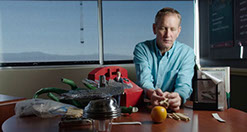
01/
DISASTER MITIGATION (5:20min)In this program, we investigate untested disaster mitigation techniques using the scenario of a hazardous asteroid. Experts discuss the implementation of these techniques.
-
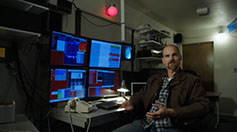
02/
MONITORING(6:39min)Monitoring reviews the tools scientists use for asteroid detection, who develops the tools, and what is the most up-to-date knowledge of Near Earth Objects (NEOs) using these detection devices.
-

03/
GEOPOLITICS(6:02min)Geopolitics examines the international reaction, interdisciplinary relationships, and global tension towards a plausible asteroid impact. From research offices and observatories to the White House and United Nations, who makes the official call? Who is in charge and what policy is in place?
-
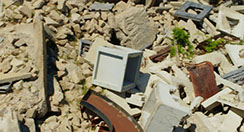
04/
DISASTER CITY (TEEX) DISASTER ACTION RESPONSE TEAM (5:21min)In this program, we investigate untested disaster mitigation techniques using the scenario of a hazardous asteroid. Experts discuss the implementation of these techniques.
-

05/
CONTAMINATION (5:13min)Professor Gary Ruvkun, Professor of Genetics at Harvard Medical School, introduces us to his DNA detector which will help to find life on other planets. Professor Ruvkun believes that life did not originate on earth, he theorises that life hitched a ride on an asteroid which then collided with our planet. In this program he tells us more about this theory, Panspermia.
-
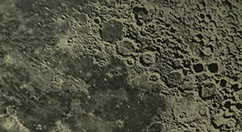
06/
MASS EXTINCTION (5:24min)Mass extinction explores the magnitude of damage created by a substantial NEO threat. Dr. David Morrison, Director of the Carl Sagan Center at the SETI Institute, talks about the last NEO deadly impact 65 million years ago. This collision resulted in the extinction of the dinosaurs, and Dr. David Kring of the Lunar Planetary Institute re-enacts his discovery of that exact impact.
-
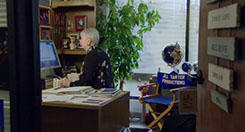
07/
THE OFFICE(9:00min)The Office looks at the geography of scientist’s offices, used as sets for re-enactments. We go in the office of Dr. Seth Shostak, Senior Astronomer and Director of the Center for SETI Research, SETI Institute and we visit the SETI Institute 70’s looking offices.
-
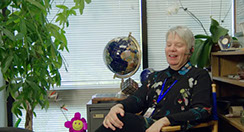
08/
ERROR (15:51min)In Error, we follow the story of Dr. Jill Tarter, Bernard M. Oliver Chair at the SETI Institute, who thought she discovered a potential extraterrestrial signal at the West Virginia Greenbank Observatory in 1998. This program presents a series of re-enactments, including a new version of Contact (1997), a film in which Jodie Foster performed the role of Dr. Jill Tarter.
-
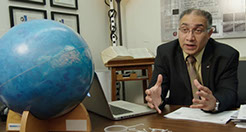
09/
COLUMBIA AND THE WORMS (6:11min)Experiments recovered from the wreckage of the Columbia space shuttle included a live group of 1 millimeter – long nematode worms. In this program, we meet scientists at Harvard Medical School in charge of the offspring of these Columbia nematodes. This program also features a contribution by Dr. Jacob Cohen from the NASA Ames Research Center.
-

10/
THE RED PHONE (5:20min)The program investigates the tools of emergency. Who are the people on the other side of the red phone in the control room? How are they trained for unexpected failure?
-
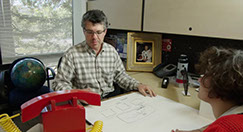
11/
MISSION CONTROL(8:32min)In Mission Control, we learn about the on-call architecture of mission control, and boredom behaviors within it, with Peter Robinson, computer scientist at the NASA Ames Research Center.
-
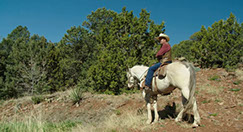
12/
AMERICAN SPIRIT (3:23min)In the final episode of Disaster Playground, taking Jean Baudrillard’s text ‘America’ as a starting point, we explore the role of the American Dream. Narrated by Dr. Seth Shostak, Senior Astronomer and Director of the Center for SETI Research, SETI Institute.
Q&A WITH THE DIRECTOR
HOW DID YOUR FASCINATION WITH SPACE START IN THE FIRST PLACE?
It started with my Soyuz Chair project, where I worked with cosmonaut Jean Pierre Haigneré from the European Space Agency (ESA). I have always been fascinated by space, the scale of the universe, and travel.
It drives us to speculate: How are we going to survive it? There are these technical and scientific questions that I love to think about, but there is also the fact that I’ve always been drawn to extreme challenges. I’m completely fascinated with places that are very difficult to access due to geopolitical barriers. Amongst all my projects, producing a project like the International Space Orchestra at NASA has been the most challenging, nerve- wracking but absolutely sublime experience.
TELL US MORE ABOUT DISASTER PLAYGROUND
Disaster Playground is about the design of emergency procedures, nailing down who is in charge, who defines the procedures when things go wrong, and according to which rationale. It’s not like we get bombarded by meteorites all the time – but imagine there is an asteroid landing on the Netherlands – not even a big one – it could damage all of Amsterdam. We have the tools that could deflect it before it comes here, but first we have to change the way we monitor the sky and organise politics to be able to deal with it in time.
WE HAVE TO PAY ATTENTION!
We have to pay attention, and we have to pay to support the Near Earth Object Programme. You don’t get a space agency rolling for free. NASA is the only agency who has been working seriously on the threat of asteroids (European are starting with the Neoshield programme). Why would they pay to protect the Netherlands, for example? There is also an international coalition of scientists and diplomats [United Nations Office for Outer Space Affairs], who put a proposal in eight years ago for dealing with asteroids, called the Asteroid Threats: A Call for Global Response, and only now, did the United Nations address the issue. It takes time. Between 2000 and 2013, an infrasound system catalogued 26 major explosions on Earth. It also became clear that this was not such a speculative threat with the 20m-wide object that landed in the Russian city of Chelyabinsk in 2013.
YOUR WEBSITE SAYS THAT DISASTER PLAYGROUND DOCUMENTS THE EDGE OF SPACE FICTION. COULD YOU DESCRIBE THIS FURTHER?
Disaster Playground is a creative platform, with many outcomes: there is a feature film (documentary released in March 2015), an exhibition, an immersive experience, a book, debates… I like to call these mega-projects. Disaster Playground is about the design of emergency procedures, nailing down who is in charge, who defines the procedures when things go wrong, and according to which rationale. There is a chain of command in place indeed that runs from the reception desk at NASA to the monitoring devices (telescopes) and NASA Headquarters , the Whitehouse and finally the United Nations Office for Outer Space Affairs where the final action plan will be decided (at least on paper).
Space Fiction: Doing the project, we, of course, came across Hollywood’s version of Apocalypse/ Space catastrophe in films such as Armageddon for example. There is an ongoing dialogue inside the feature film and the various project’s outcomes on the role that science_ in our case Scientists_ should fulfill. We are looking at the pop culture as a start and then we engage with the reality of each events, the real people who are the real Bruce Willis_ Thus the term Space Fiction. Disaster Playground aims to get you to engage critically with the human condition in place in the space program, the craft, the real people doing it, their quirkiness, their sometimes imperfect reactions and their successes.
WHAT DOES DISASTER PLAYGROUND MEAN TO YOU?
I am designing ‘extreme experiences’ for the public in order for them to question what the future of space exploration might be, how could they make dark energy in their kitchen sink and other surreal experiences, how can they make it for real? I believe that, by taking an extreme approach (Antonin Artaud talked about ‘the theater of Cruelty’ for that type of radical approach with the public), you really get the public to actively engage with a cause or a research and that is what motivates me with space exploration, I want to see the next woman on Mars or on an asteroid, and without public backing that will not happen.
Disaster Playground is a critical platform that engages the main actors of the project to reflect on their practice and get members of the public to engage with what the craft of space exploration is, who are the people ‘making’ it, and where is this all going?
HOW DO THE UNIQUE COMBINATION OF COMMUNICATION TOOLS (DOCUMENTARY FEATURE, BOOK, EXHIBITIONS) USED IN DISASTER PLAYGROUND WORK TOGETHER TO PRODUCE THE FINAL CREATIVE PLATFORM? WHAT DO EACH OF THESE ELEMENTS BRING INDIVIDUALLY AND AS A GROUP?
Each of them are connecting to various audiences. The Film Audience, the Digital Audience, the academic audience, the scientific audience, the graphic audience, the design audience etc… Each of these audiences are very different and so are their needs. This project is engaging the public at various level with various outcomes and each are tailored for them.
WHAT IS ONE MAJOR DOWNSIDE OF NOT GETTING FUNDING FOR THE SPACE PROGRAM?
There is a loss of institutional knowledge, which is incredibly sad. NASA is already forgetting the craft and the knowledge of generations. Not many people can now do the necessary archival work. Funding comes and goes, and governmental cuts hit the space program very heavily. We haven’t archived all of the successes from the Apollo mission! I went to visit some place in the middle of Texas (the Lunar and Planetary Institute USRA) where they have the flight plans of Apollo 11, 12 etc… They are the only copies in existence. Some have been scanned and available online but a lot of them are lost in these shelves.
IT’S CULTURAL HERITAGE!
Absolutely, but there is no money to support an archiving system.
Someone needs to do a PhD and archive it all… I’m doing a PhD, but not on the archiving! It’s mainly about the International Space Orchestra and Disaster Playground, about how you can implement design of experiences within an institution for its own benefit, and for the benefit of the public. These projects are not about me gaining personal access; they are about sharing the knowledge that I gain. I’m not working for scientists. I’m working for members of the public to access this incredible knowledge in an experiential manner.
YOU ATTENDED THE ROYAL COLLEGE OF ART AND YOU TEACH THERE AND AT CENTRAL SAINT MARTINS, BUT YOUR DON’T CALL YOURSELF AN ARTIST, HOW DID YOU START MAKING FILMS?
I came from the art world initially. I started in fine arts and used to paint, but I don’t think I was a very good painter. I decided to go into a more craft-based direction, which began as textile design. My discipline is design. I still think in those terms. I think about materials, about how they fit together. I think about communication and tangibility. I did my first feature film to document the process of a project I assembled in NASA and The SETI Institute: the International Space Orchestra (2013). This is an orchestra made of individuals who works at NASA and the SETI Institute and they reenact the drama of mission control. The International Space Orchestra (2013) (running time 57 min) tells the story of the journey I took with the employees of NASA Ames Research Center and the SETI Institute in California, in setting up the International Space Orchestra, and the production of the space opera we made together.
DO YOU SEE BIG DIFFERENCES BETWEEN DESIGN, ART AND FILM?
I wouldn’t say there is a big difference these days. There’s not even a question anymore about the fact that they’re blurring, and I think the blurring of boundaries is actually a really good thing. There are no more pure disciplines. I am happy to exploit this, especially in times of crisis. This is how new disciplines and hybrid disciplines can arise. Ultimately, whatever I do, the aim is to communicate. The experience is for you, the public.
SO WHAT IS A DESIGNER OF EXPERIENCES?
I come from this series of designers called critical designers, speculative designers. My mentor is Anthony Dunne, who taught me while I was at the Royal College of Art for Design Interaction and who has created this whole platform for design for debate. He is really pushing the boundaries of design and reconsidering the element of fiction. Narrative is a big part of what we do, but instead of finding answers we generate questions. For example, how might the future of nanotechnology evolve? How might the future of synthetic biology evolve, and how might the public relate to it? So we try to generate these questions through design practices.
But critical design hasn’t just popped up—it’s informed by radical architects like Archigram, for example, in the ’60s, by Italian Radical Design from the same period. Digging deep within this area of critical design, I came up with my own thing, which is the design of experiences, which for me is critical design with input from the theatrical world and the performative world. I look into improvisation and Commedia dell’Arte and think about how to implement that into design. I’ve been interested in the theory of theater, especially Brecht and Antonin Artaud.
UnCube Magazine www.uncubemagazine.com
Contact
- For Disaster Playground’s general inquiries, marketing and press requests please contact us at hello[@]nellyben.com
- For Disaster Playground’s production or new project inquiries, please contact producer Hannah Fasching at hannah[@]nellyben.com
- For any keynotes, conferences, seminars or talk inquiries please contact Deborah Rey-Burns, Nelly Ben Hayoun’s Agent, at deborah[@]propela.co.uk







